TYPE DESIGN INFORMATION PAGE last updated on Tue Oct 28 08:58:47 EDT 2025
FONT RECOGNITION VIA FONT MOOSE
|
|
|
|
|
Type design in Hungary | ||
|
|
|
|
SWITCH TO INDEX FILE
42 Studio
|
Aka Lilco and Co. Behance link. Creative Market link. More recent Creative Market link. Home page. [Google] [More] ⦿ |
Erdliget, Hungary-based designer (b. 1995) of Blobb (2017) and the techno typeface Undefeated (2017). Home page. Dafont link. [Google] [More] ⦿ | |
| |
Hungarian foundry/press run by Jesuits in the late 18th century. Gábor Kóthay based some of his fonts on their 1773 type specimen book. One is the 2-weight Schwabacher style Fraktur font SchwarzKopf (2002). LaDanse is based on a scan of a handwritten inventory found in that book. [Google] [More] ⦿ | |
For a project at Sopron Institute of Applied Arts in 2016, Adam Asztalos (Sopron, Hungary) designed the techno display typeface Wagr. [Google] [More] ⦿ | |
During his studies at the Visual Arts Institute, of Eszterhazy Karoly University in Eger, Hungary, Adam Csider designed Sad Samurai (2019: free) and Signum (2019, an experimental variable font). [Google] [More] ⦿ | |
Eger, Hungary-based designer of Kann17 (2020) and Heming (2021: a free variable sans). [Google] [More] ⦿ | |
Eger, Hungary-based creator of Hairline (2012, a sans family). [Google] [More] ⦿ | |
Adam Katyi
| |
| |
Talented designer in Budapest, who first studied mathematics at Eötvös Loránd University, Budapest, and then typography at the Moholy-Nagy University of Art and Design. His typeface Cirque (2010) is a unicase modular geometric beauty, created with mathematical precision. He explains: My main profile is creating CD covers, posters, designing books, sometimes with the aid of several programming techniques. Home page. [Google] [More] ⦿ | |
| |
Hungarian designer of the multiline display typeface Finity (2014). Dafont link. [Google] [More] ⦿ | |
Budapest-based design student at the Hungarian University of Fine Arts, who created the octagonal typeface Pylon (2012). [Google] [More] ⦿ | |
Agnes Jekli
| |
Budapest, Hungary-based designer of the decorativec typeface Whip (2015). [Google] [More] ⦿ | |
Budapest-based graphic designer. He created several interesting display typefaces in 2011. Examples: i, ii, iii, iv. Xenotype was created in 2012. [Google] [More] ⦿ | |
In 2013, he published the beautiful free poster font Mopster. Trefort Grotesk (2014) is a custom unicase monoline condensed sans typeface that was created for a World War II monument at Eötvös Loránd University to commemorate the university's students and professors who died during the war. In 2016, he designed the octagonal typeface Matematica: Matematica is a rounded, unicase, mono-spaced, pseudo-bitmap typeface constructed on a 5-by-5 grid. Relying on the most basic geometric shapes, the typeface draws heavily on the work of Dutch Bauhaus typographer Jurriaan Schrofer (1926-1990). Dafont link. Behance link. Cargo Collective link [Google] [More] ⦿ | |
Hungarian painter known for his erotic drawings, b. 1901, Budapest, d. 1968. He lived in Budapest, Paris and Vienna. In Vienna, he was a caricaturist in cabarets such as Der Liebe Augustin (1931) and at ABC (1934-1937). In 1946, he drew an erotic alphabet. [Google] [More] ⦿ | |
Budapest-based designer of Lightline (2013, a paperclip font) and Papercut (2014, octagonal), two typefaces that were created during her studies. [Google] [More] ⦿ | |
During her graphic design studies at MOME university, Alexandra szantai (Pilisszentivan, Hungary) created an untitled display typeface by blending Manhattan ITC (1970) and Avant Garde (1970). [Google] [More] ⦿ | |
Alive Fonts
|
At House Industries he designed fonts such as HouseFly, Horatio, Funkhouse, Kathouse, Chophouse, Treehouse, Roundhouse (1995), Funhouse, Randumhouse (1995). In 2011, he digitized Dave West's cartoon font Plinc Kerpow for House Industries. At Alive Fonts, est. 2013, he published Moka (2017, casual), Andras (2013), Cica (2013, a psychedelic typeface), and Ovoda (2013, a ball-terminal-themed sans). [Google] [MyFonts] [More] ⦿ |
Her graduation project at KABK was the Leda family (2012): Leda Broken Bold (blackletter), Leda Serif. [Google] [More] ⦿ | |
Allen Mercer
| |
Hungarian designer of Ambitsek (2007, pixel face). [Google] [More] ⦿ | |
Amondo Szegi
| |
| |
Kecskemet, Hungary-based designer of experimental typefaces called Pulsepect Types (2012). [Google] [More] ⦿ | |
Hungarian designer of the Q-Tip-inspired typeface Earpick (2021). [Google] [More] ⦿ | |
Behance link. [Google] [More] ⦿ | |
Andras Semler (Sopron, Hungary) designed BARCS (2013), an experimental typeface. [Google] [More] ⦿ | |
Budapest-based creator of the free hand-printed typeface Fast In My Car (2013). Behance link. [Google] [More] ⦿ | |
Lecturer at the Department of German Studies of the University of Szeged, Hungary. Designer of the free Utopia Nova font family for Latin, Greek and Cyrillic (2014-2015), which is a modified version of Andrey V. Panov's Heuristica font family, which in turn is based on the Utopia Type 1 fonts, designed by Robert Slimbach for Adobe and licensed to the TeX Users Group (TUG) for free modification and redistribution. Open Font Library link. The changes applied to Heuristica:
Utopia Nova was renamed Lingua Franca a day after it was first posted on Open Font Library. Open Font Library link for Andreas Nolda. In 2016, we find an extension of Utopia Nova by Stefan Peev called Linguistics Pro on CTAN, where useful TeX support files are added as well. See also Font Squirrel. [Google] [More] ⦿ | |
Hungarian designer of Anton Intone (2019) as a school project at Visual Arts Institute in Eger, Hungary. [Google] [More] ⦿ | |
During her studies at Visual Arts Institute in Eger, Hungary, Anett Kalotai designed Chubby (2019). [Google] [More] ⦿ | |
For a project at the Media & Design Department Eger, Visual Arts Institue, Eger, Hungary, Aniko Veres designed the display typefaces Ithemba (2021) and Leiko (2020), and the monolinear minimalist sans typeface Forma (2020). In 2020, she designed the informal monolinear sans typeface Nikushimi. [Google] [More] ⦿ | |
Graphic designer in Budapest. She created the wonderful Fraktur typeface Mantodeum (2012). [Google] [More] ⦿ | |
During her graphic design studies at the Moholy-Nagy University of Arts Budapest, Hungary, Anna Balizs created the experimental geometric typeface Triongl (2013). Behance link. [Google] [More] ⦿ | |
Creator of the hairline avant garde font Visart (2013). It was developed during her studies in Budapest. [Google] [More] ⦿ | |
Budapest, Hungary-based designer of the triangulated typeface Chaos (2016), a playful stencil font (2019), the glitch font Say Hello (2019), and the textured New Ways (2019). [Google] [More] ⦿ | |
Annamari Ban
| |
Anone Design
| Daniel Pasztor (Anone Design, Debrecen, Hungary) created the organic display typeface Amorf (2013, Free download). Brushy (2013) is---as the name suggests---a brush font. And a4 Serif (2013) is a quaint slab serif typeface. All fonts are free but his web site is dysfunctional. Behance link. Devian Tart link. [Google] [More] ⦿ |
Designer with Wenzel Wendler of the Totfalusi family (Magyar, 1956). [Google] [More] ⦿ | |
Typographic poster examples: A, B, C, D, E, F, G | H | I | J | K | L | M | N | O | P | Q. Examples of typographically great bike posters: A | B | C. Behance link. Facebook link. Flickr link. Die Gestalten link. [Google] [More] ⦿ | |
Hungarian foundry, which made the organic sans family Terra, the architectural lettering font Sample, and the very geometric sans Simple. [Google] [More] ⦿ | |
Hungarian designer (b. 1984) who made the free animal dingbat font Red List (2011). [Google] [More] ⦿ | |
Behance link. Dafont link. [Google] [More] ⦿ | |
He designed Migrant (2017), a simplified version of the ancient Hungarian script that was used by nomadic Hungarian tribes who migrated for centuries before settling down. Migrant was published during his studies in Edinburgh, Scotland. [Google] [More] ⦿ | |
Hungarian designer of Circular Slab (2018). [Google] [More] ⦿ | |
Attila Horvath
| |
| |
Attila Zigó
| |
Hungarian studio which made the Victorian / hacker style headline typeface New Typeface (2011). [Google] [More] ⦿ | |
Bálint Koczman
| |
Hungarian designer at Barack media design works who created the corporate identity font Mentha (2002), which can be downloaded here and here. [Google] [More] ⦿ | |
Eger, Hungary-based designer of the tweetware hexagonal vector font Decode (2015). Behance link. [Google] [More] ⦿ | |
During his studies in Budapest, Balasz Pusztai designed the rounded modular poster typeface Industria (2016) and the experimental typeface Burda (2016), which is based on the crisscrossing lines of Burda's famous pattern books. [Google] [More] ⦿ | |
Behance link. [Google] [More] ⦿ | |
Budapest-based designer, as a student at Jaschik Álmos Secondary School of Art, of Caedmon Gothic (2018), a blackletter typeface that is as dark as Orban's Macchiavelism. [Google] [More] ⦿ | |
Graphic design student in Budapest, who created the decorative typeface Travel in 2017. [Google] [More] ⦿ | |
During his studies in Szeged, Hungary, Balazs Szemmelroth designed the multistyle geometric sans typeface family Balage (2016) and the free typeface family Sometimes (2018). In 2018, he created the 4-axis variable font Fluido at Visual Arts Institute Egere. [Google] [More] ⦿ | |
Hungarian creator (b. 1995) of the octagonal typeface Altera (2013), the hand-printed typeface Earth (2013), the pixel typeface Dots (2013), and the circle-based typeface Bublet (2013). In 2014, he designed the squarish typeface Mars and the display typeface NG. In 2016, he published the octagonal typeface Minimal. [Google] [More] ⦿ | |
Creative director in Budapest, who used FontStruct to create the modular straight-edge typeface Henry (2011). [Google] [More] ⦿ | |
Hungarian designer in Budapest, b. 1987. Home page. Designer of the display typeface Paris je t'aime (2010, a heavy comic book face) and the contrast typeface Blessed (2011), renamed Fortunata (a font without closed counters) and Fortunatus a few days after its first publication. Desereted (2012) is a thin geometric sans face. Unzip Me (2012) is an alphading typeface. [Google] [More] ⦿ | |
Budapest, Hungary-based designer of the vector format display typefaces Oldschl, Broadway, Glassy, Glass and Wood, Neon, and Colorful. Creative Market link. [Google] [More] ⦿ | |
Balla Dora Typo-Grafika
| Many nice examples of creative typography, worked into a blog by Hungarian designer Dora Balla. In 2015, she made the experimental typeface HV Font. Home page. Behance link. [Google] [More] ⦿ |
| |
During his type and graphic design studies, Batke Bendegüz (Kamut, Hungary) created the inline triangulated and octagonal typeface family Erida (2013-2014). [Google] [More] ⦿ | |
Budapest, Hungary-based designer of the dada style monospaced font Locksmith (2017). [Google] [More] ⦿ | |
Bela Frank
| |
Ben Hodosi
|
|
Benjamin Hodosi
| |
Eger, Hungary-based designer of the display sans typeface Selcouth (2019). [Google] [More] ⦿ | |
Besarion Gugushvili
| |
Hungarian designer of the shadow typeface Invisible (2015). [Google] [More] ⦿ | |
Laszlo, aka the Bleeding Dragon, is the Budapest-based designer of the grunge font Stampeded (2006). [Google] [More] ⦿ | |
Eger, Hungary-based designer of Grumpy Fat Font (2019). [Google] [More] ⦿ | |
During her studies at the Visual Arts Institute in Eger, Hungary, Boglarka Torok designed the eight bit game font SP8 (2019). [Google] [More] ⦿ | |
Budapest-based designer of the counerless fat octagonal typeface Sqerald (2012). [Google] [More] ⦿ | |
Budapest-based designer of these typefaces in 2013: Vision, Konstruktive (inspired by the skyscrapers in New York, and the basic Swiss and Bauhaus styles). [Google] [More] ⦿ | |
During her studies in Budapest, Borbola Elblinger created Hybrid (2015), a typeface obtained by merging Bodoni and Source Sans Pro. [Google] [More] ⦿ | |
Hungarian creator of Robin Script (2012: children's hand), Robin Schooler (2012), and Robin Graffiti (2012). [Google] [More] ⦿ | |
At the Visual Arts Institute, Eger, Hungary, Botond Csiby-Gindele (Miercurea Ciuc, Romania) designed the experimental square typeface Qadratic (2017). [Google] [More] ⦿ | |
Bumbayo Font Fabrik
|
Klingspor link. Dafont link. Devian Tart link. [Google] [More] ⦿ |
Burg & Oeden
|
|
Calligraphics
|
Fonts at Calligraphics: Caterina (1998), Aperto (1995, a stressed sans family), Harmonica (2005, script), DemiTasse (2001), Gargoyle (2001, a rounded informal script) and Espresso (2001). FontShop link. Linotype link. Klingspor link. View Paul Veres's typefaces. [Google] [MyFonts] [More] ⦿ |
Typographer who used to work at DTC (Digital Typeface Company)/ScanDer in Hungary. [Google] [More] ⦿ | |
Hungarian creator of the handwriting typeface Chabinho2008v2.0 (2008). [Google] [More] ⦿ | |
Born in 1989, this Hungarian created the handwriting typefaces Chloe (2010) and Chloe's Handwriting (2010). Dafont link. Devian tart link. [Google] [More] ⦿ | |
Cinketype
|
Future Fonts link. [Google] [More] ⦿ |
Hungarian designer at FONTana Typestudio of the rune font Csenge. [Google] [More] ⦿ | |
Hungarian designer of HUN-DIN 1451 (2012). [Google] [More] ⦿ | |
During his studies at the Visual Arts Institute in Eger, Hungary, Daniel Domonkos designed the LED / sci-fi typeface Carrier Mono (2020) and the marker pen font Sticky Papers (2020). [Google] [More] ⦿ | |
Hungarian creator (b. 1993) of the severe-looking octagonal typeface Agero (2012). [Google] [More] ⦿ | |
Hungarian digital photographer, who created Call of Duty (2009). [Google] [More] ⦿ | |
Daniel Pasztor
| |
Budapest, Hungary-based designer of the Peignotian typeface Ano (2018). [Google] [More] ⦿ | |
Miskolc, Hungary-based designer of the free pixel typeface Bit (2017) during his studies at Eszterhazy Karoly College. [Google] [More] ⦿ | |
David Sum
| Budapest-based designer of the piano key typeface family Tango (2012), the thin octagonal typeface Standard (2012), the piano key typeface Slink (2012), and the experimental typefaces Wang (2012), Galtor (2012, an inline font available from Ten Dollar Fonts) and Krix (2012). Typefaces from 2013: Fatty, Borg (free), Neugol (a geometric sans with slanted cuts). He writes about Borg: Borg is a geometric typeface with a curved incision. My inspiration was Swedish furniture. The PAOK FC is a Greek football team and they used my font on their new jersey in 2015. In 2016 Levante UD, SSC Napoli and Paris Saint-Germain too used my font on their new jerseys. Behance link. Devian Tart link. Hellofont link. Home page for Titus Prod. [Google] [MyFonts] [More] ⦿ |
David Sum
| |
Budapest-based designer of Hairvetica (2014), which is a tweetware vector format font based on Neue Helvetica. Designer of the (tweetware) hipster typeface Nazaré (2015) and he squarish monospaced typeface Unseen (2015). [Google] [More] ⦿ | |
During his graphic design studies in budapest, David vass designed the thin techno typeface Types of Light (2013). Pixer (2012) is a circle-based pixel font. [Google] [More] ⦿ | |
Hungarian designer of the 5x5 pixel typeface Pixel (2011). [Google] [More] ⦿ | |
Budapest, Hungary-based designer of the native Indian emulation typeface Navajo Valley (2019) and a ransom note font in 2019. [Google] [More] ⦿ | |
As an art student in Eger, Hungary, Doczi Noemi designed the display typeface Aleo Hu (2016). [Google] [More] ⦿ | |
Eger, Hungary-based designer of Happy Banana Font (2019). [Google] [More] ⦿ | |
During his studies at the Visual Arts Institute in Eger, Hungary, Dominik szabo designed the display typefaces Agnes (2020), Neu Neu (2020) and Outera (2020). [Google] [More] ⦿ | |
Budapest-based designer of the counterless display typeface Disfigured Alphabet (2013). [Google] [More] ⦿ | |
Dora Balla
| |
Hungarian designer of an experimental 3d typeface in 2018, and a handcrafted and experimental typeface in 2019. [Google] [More] ⦿ | |
During her studies in Budapest, Dora Prelozsnik designed a pixel typeface in 2017. [Google] [More] ⦿ | |
Dori Novotny (Budapest, Hungary) started her studies at the Hungarian University of Fine Arts, Budapest, in 2010. She created a typeface to honor Bruno Munari (1907-1998) and took inspiration from Munari's grids. The new grid-based typeface is called Munari (2013). In 2012, she designed the stylized geometric typeface Ritmo. | |
Hungarian designer of the SVG font Zorka (2019). [Google] [More] ⦿ | |
Budapest-based designer of the experimental pixelized typeface Modular (2014). [Google] [More] ⦿ | |
Szentlöinckáta, Hungary-based designer of the sans display typeface Cobalt (2015). [Google] [More] ⦿ | |
Graphic designer in Budapest who designed Pixel Font in 2017. [Google] [More] ⦿ | |
DTC (Digital Typeface Company, est. 1999, closed in 2004) was a Hungarian outfit founded and run by printer-typographer Attila Derecskei that developed and sold OpenType, truetype and Type 1 fonts on CDs or via downloads for just about every platform. It seems that they developed the East European and Cyrillic additions for the DTC font collection of Jon Stern's Minnesota-based Digital Typeface Corp. One of their products was called ProFonts Library. An earlier name of the Hungarian company was ScanDer Ltd, established by Derecskei in 1993. Other typographers at ScanDer included Leslie Egerer and Cathy Saufert. They said: 2500 TrueType&PostScript font for Windows 3.1x / 95 / 98 / Me / NT / 2000 / XP / OS2 / Linux / MacOs with Unicode. Some fonts with Cyrillic, Greek and Hebrew characters. Special pack is the PixelFonts Library for Flash. Developed by Digital Typeface Co. USA. Managed by Jon Stern. Old defunct MyFonts link. [Google] [MyFonts] [More] ⦿ | |
Budapest, Hungary-based designer of three all caps display typefaces in 2019, including an art deco face and a pixel font. [Google] [More] ⦿ | |
At Visual Arts Institute, Eger, Hungary-based Edina Varga designed the rune emulation typeface Runa (2019) as a derivation of Pablo Impallari's Monda. [Google] [More] ⦿ | |
Hungarian type designer (b. 1944, Fot, d. 2004, Budapest) who studied at the Hochschule für Graphik und Buchkunst in Leipzig. Edit designed the award-winning typeface Pannon (E. Magyar) in 1972, which is said to be the last Hungarian metal typeface. Pannon was digitized in 2001 by Oszkár Boskovitz at Nepfont Digital Foundry as Pannon Antiqua. [Google] [More] ⦿ | |
Budapest-based designer of the painter's ink spill font Mimoza (2014). [Google] [More] ⦿ | |
Type foundry in Budapest where Zoltán Nagy published most of his typefaces. These include Ungarische Grotesk breitfett (1967), Ecsetiras (18=967) and Reklam Kurziv (a signage face). [Google] [More] ⦿ | |
At the Visual Arts Institute in Eger, Hungary, Emma Gal (Kecskemet, Hungary) designed the rounded sans typeface Caminetto (2019). [Google] [More] ⦿ | |
Emöke Németh
| During her studies in Budapest, Hungary, Emöke Németh designed the free decorative all caps compass-and-ruler typeface Half Philip (2017), and the experimental Stitched Alphabet (2017). Designer of the piano key typeface Opaque (2019). [Google] [More] ⦿ |
Enci Bognar (Budapest) is working on a hexagonal typeface called To Bee Cafe (sic) (2013). Steam Font (2013) is an experimental typeface. [Google] [More] ⦿ | |
Based in Budapest, Eniko Deri has created several experimental typefaces in 2014, mixing geometrical concepts into the shapes of the glyphs. [Google] [More] ⦿ | |
Budapest, Hungary-based designer of the inline display typeface Klauzal (2017). [Google] [More] ⦿ | |
Budapest, Hungary-based designer of an experimental typeface created by using nail polish on coated paper (2016). [Google] [More] ⦿ | |
Felgyo, Hungary-based designer of these typefaces in 2018, as a student in the Media and Design Department, Eger, Hungary: I am not a serial killer (handcrafted), Circle. [Google] [More] ⦿ | |
Behance link. [Google] [More] ⦿ | |
Enikö Fodor (Eger, Hungary) designed the glaz krak typeface Cold Marble in 2014. Behance link. [Google] [More] ⦿ | |
During his studies in Eger, Hungary, Erik Pal (Hajduböszörmeny, Hungary) redesigned Mikko Nuuttila's Jaapokki (2014) to make the fart-themed font Jaapukki (2018). He also created the modernist furniture-themed font Mies van der Rohe (2018), which is named after the famous German-American architect---his real name was v---who lived from 1886 until 1969. [Google] [More] ⦿ | |
Hungarian graphic designer who published the Flintstone or ex[ressionist font Jungle Display (2019). [Google] [More] ⦿ | |
Budapest-based foundry acquired in 1926 by D. Stempel AG (50%) and H. Berthold AG (50%). Later it spun off from Stempel. In English: First Hungarian Type Foundry. [Google] [More] ⦿ | |
Design studio in Budapest, Hungary. Creators of the grungy Gasztrofont (2015). Behance link. [Google] [More] ⦿ | |
Budapest, Hungary-based designer of the display typeface Din The Club (2016). [Google] [More] ⦿ | |
Budapest, Hungary-based designer of a Peignotian typeface in 2017. [Google] [More] ⦿ | |
Miskolc, Hungary-based designer of Bodoni Town (2015). This textured typeface is based on the caps letter of the Bodoni Book font family and maps of the 26 largest area cities of the world. [Google] [More] ⦿ | |
Photographer Eszter Herczeg earned her Bachelor degree in graphic design at Visart Academy of Art and Design, Budapest. She designed the (naked) Body Typeface (2013). [Google] [More] ⦿ | |
During her studies in Budapest, Eszter Kovacs designed the modular typeface Baseline (2017). [Google] [More] ⦿ | |
Budapest-based designer of the piano key typeface Fusion (2012). [Google] [More] ⦿ | |
| |
Artist in Copenhagen who was born and raised in Budapest, Hungary. In 2017, she created an alphabet by using nails and a thread, and described the experiment as follows: The Nailed It font was a group project with Martin Billy Malek and Melina Miller at KEA---Copenhagen School of Design and Technology. This font had been created by tying a single piece of thread around pins. [Google] [More] ⦿ | |
Faberfonts
|
He created the ink trap font Portrait Of A Lady (2009), FR Irisz (2009, didone family), Pontifex (2009), the hand-printed Munkácsy 1120 (2009), the unicase Reka Sans (2009), the thick-thin Azur (2009), the simple sans Babyface (2009), the medieval sorcery font Elmulas (2009), the Valentine;s Day font Sapet (2009), the avant garde sans family Hopper Sans (2009) and the ultra-fat typeface Rendezvous (2009). Callimachos (2009) is a fun triple-lined hand-printed headline typeface (with a Cyrillic version added in). Azur Title Font (2009) is a hairline slabbed typewriter type. Pasta Simpla (2009, followed by FR Pasta Mono in 2010) is another experimental jewel. Hobbista (2009) mixes symbols and glyphs. FR Rama Nous (2009) is a free modular font. In 2009, he also made Arrow, Enamel Paint Type, Belonging (Roman caps). Commercial fonts made in 2010: FR Unalom, FR Sniccer (stencil), FR Ceruza, FR Minta (a dingbat typeface to make labyrinthine patterns; +Two), FR Tabula (beveled face), FR Smaragdina, FR Mintry One and Two (pattern fonts), and a custom alphabet for Esquire Russia, FR Hopper (monoline sans family). Activity in 2011: A didone-inspired typeface called MFA Dagi that was was commissioned for a catalog of an exhibition at The Museum of Fine Arts (Budapest, Hungary). [Google] [MyFonts] [More] ⦿ |
During her studies at the Moholy-Nagy University of Arts & Design, Budapest-based Fanni Demecs created Georgi (2015), a playful experimental typeface named after Georgi Lajos. [Google] [More] ⦿ | |
Illustrator from Sopron, Hungary. Her hand-drawn lettering on some moleskine posters is attractive. In 2010, she created the mosaic typeface Diafore. [Google] [More] ⦿ | |
Eger, Hungary-based designer of Epik ML (2019), a striped textured typeface derived from Raleway Black. [Google] [More] ⦿ | |
Illustrator in Budapest who designed the ornamental caps alpahbet Hy Type in 2012. In 2013, she created Addiction Type. [Google] [More] ⦿ | |
Budapest-based artist and student, b. 1990. Creator of some rotunda alphabets in 2011. [Google] [More] ⦿ | |
Budapest, Hungary-based designer of the decorative caps typeface Nest (2018). [Google] [More] ⦿ | |
Graphic designer in Sopron, Hungary. She made the modular experimental typeface Pixels (2010). [Google] [More] ⦿ | |
Font HU
|
|
FONTana Typestudio
|
Free typefaces: Zodiac (2000), Cards (Gyula Zsigri, 2001), Maldoror, Domino (Gabor Kóthay), Count, Csenge (a Hungarian rune font by Csaba Dávid), Qwerty (Gabor Kóthay, 2000), Y2K (Gabor Kóthay, 2000). Early commercial fonts: Woodini (caps), Sleeping Beauty (caps), Zimbalo (1999, Amondó Szegi), Pacalsone (1999, Amondó Szegi), Paradox (1999, Amondó Szegi), Construct (2001, Amondó Szegi), Binario (2000, Amondó Szegi), Bikewrench (2001, Amondó Szegi), Cabin (2001, Gábor Kóthay). At T-26, in 2001, Amondó Szegi published the commercial typefaces MuseFace (art nouveau), Glosso (2003), Xodus (2001, Regular, Italic, Forgotten), Kozma-Ornaments, all showing old Slavonic and/or Armenian influences in Latin letters. In 2000, he made Alian Ornaments (floral ornaments) for T-26. At T-26, Gábor Kóthay published Adagietto (2000), Minerva (2000), Archetype (2000). At PsyOps, Gábor Kóthay published the formal script Anglia (2001), Berill (2001), and Plexo (2001). Amondó Szegi's typefaces at T-26: Nexodus (2008, medieval style), Zenthes (2008), Alien Ornaments, Glosso, Iskola (2002, a Victorian typeface done with Silas Dilworth), Kozma (great ornaments), Melico, Melico Ornaments (2004, another great set), Xodus. At P22, Szegi designed the curly typeface Mantra (2005). Amondó Szegi's Telegdi family is since 2001 available from P22. At The Type Trust, he created the playful Gepetto (2006). Typefaces from 2013: Ma (avant-garde, constructivist, done as an hommage to Lajos Kassak), Overdose, Sorry (kitchen tile typeface), Atett (hommage to Lajos Kassak), Street Soul, Samizdat, Velorex (brush script), Zsir (fat octagonal face), Kedves (hipster font). Typefaces from 2014: Iseum, Pix Gotisch. Among their custom corporate identity jobs, the Losonczi Hair Salon work (2012) is quite outstanding. Dubstep (2012) is an experimental triangulated grid-based typeface. In 2013, Glosso Novum (2013, Fontana Type Foundry), a remastering of Glosso (2003), was published. Nexodus (2013) is a reworking of his 2001 typeface Xodus, with new ornaments and zodiac signs, and more weights. Xodus (2001, Regular, Italic, Forgotten) revives work by Miklós Kis Misztótfalusi (Nicholas Kis), who was one of the first designers of Armenian type: He prepared his first set of exotic types before September 1685 for the Armenian printing house in Amsterdam. It was the knowledgeable mayor of Amsterdam who requested that those types be founded. These types were used to print the mayor's (Nicolaes Witsen) work entitled Noord en Oost Tartarye. Misztótfalusi's name appears in the colophon of the book. Later, in 1687, he found Georgian types, which were, in many respects, similar to the Armenian set. Since there was no printing house in Georgia, he designed the types on the basis of some manuscripts. Unfortunately, as legend has it, the types never reached the Georgian court, which had commissioned Misztótfalusi to design them. They were either lost or stolen somewhere in Sweden. However, a sample sheet survived and was found in 1980 in Amsterdam. It may seem to make no sense to re-Latinise the types of Misztótfalus, who himself was a great master in founding Latin types, and for whom Armenian types meant the first step in a new direction. Typefaces from 2016: Crave Sans. Klingspor link. Fontspace link. Behance link. Dafont link. Creative Market link. [Google] [MyFonts] [More] ⦿ |
Fontbistro
| Oszkár Boskovitz's Hungarian foundry. Before Fontbistro, he ran Nepfont Digital Foundry. He is a graduate of MOME, Moholy-Nagy University of Art & Design, Budapest, Hungary. His fonts sold at Fontbistro include Balek, Blabla, Ecsetirás (2001, a brush typeface based on a typeface of Zoltán Nagy, 1967), Konwektor (techno), Hardware, Monostar (2014, a monoline rounded sans), Pannon Antiqua (2001, based on a family by Edit Zigány (1972), Pluto (2006), Shrapnel (organic), Syrup (2005, stencil), Tilos (2002, rough stencil family), Troppauer (2005, unicase), Tubyfex (2005, experimental). [Google] [More] ⦿ |
Fontboard (was Nyelvészeti Fontok)
| Free truetype fonts for linguistics by Gyula Zsigri include Uralica, Saecula Hungarica, OctoCyrillic and ExtraLow. All are fonts with plenty of accents for Hungarian and Cyrillic. Linguistic fonts: direct link. Alternate URL. Check out Gyula Zsigri's cards font called "Cards" (1998). Hungarian mirror. Another Hungarian mirror. Uralica and OctoCyrillic are also here. [Google] [More] ⦿ |
font.hu
|
|
Fontmunkások
|
Dafont link. FontShop link. [Google] [More] ⦿ |
Type news and type blog located in Hungary, run by Tamas, Teufel, and Jobart (Eva and Gábor) and the Kóthay's (Eva, Sára, Kata and Gábor). [Google] [More] ⦿ | |
ForFourCreative
|
|
Web design company in Miskolc, Hungary, which designed a free photoshop format brush typeface in 2016. Typefaces from 2017: a free SVG format alphabet. [Google] [More] ⦿ | |
Frank Béla
| |
Frank Fonts
|
At Fontsmith he designed FS Silas Sans (2008, with Jason Smith, Fernando Mello and Phil Garnham) and FS Silas Slab (2015). [Google] [MyFonts] [More] ⦿ |
Gábor Hosszú
| Beautiful Hungarian rune fonts by Gábor Hosszú: RovasFS, RovasFS, RovasFSJB, RovasFSJB, RovasMA, RovasMA, RovasMAJB, RovasMAJB, RovasSada, RovasSadaJB, RovasSumJB, RovasSumer, RovasSzabvany, RovasSzabvany, RovasSzabvanyJB, RovasSzabvanyJB, RovasV1, RovasV1, RovasV1JB, RovasV1JB, Csenge. See also here. [Google] [More] ⦿ |
Gábor Hosszú
| |
Gábor Kóthay
| |
Gábor Kóthay
| |
Creator of the alchemic typeface Rovas Kiterjesztett (2012). Inside the font, we also find a reference to three other people, Gyozo Libisch, Sandor Ver, and Tamas Rumi, and the date is 1995-2009. [Google] [More] ⦿ | |
Hungarian designer of the curvy yet modular typeface Vibeti (2017). Instagram link. [Google] [More] ⦿ | |
Dafont link. Behance link. [Google] [More] ⦿ | |
Gabriella Emoke Nemeth
| |
Eger, Hungary-based student at Eszterhazy Karoly College in 2018. During his studies, he designed the display typeface Copacetic (2018) and the experimental font Defile (2018). [Google] [More] ⦿ | |
Gaspar Sinai
| |
Henred, Hungary-based graphic designer, who created some experimental typefaces in 2010. [Google] [More] ⦿ | |
Georgian Scripture and Fonts
| Classical fonts can be downloaded here. David Chelidze's page on Georgian fonts, which has fonts designed by Besarion Gugushvili, Reno Siradze, Temuri Imnaishvili and Giorgi Topouria. Included is a font replica of a Tbilisi Printing House Type by Hungarian Master Mikhail Stefan Hungaro-Vlakhian from 1706, called BPG Mikheil Stefane U, and a Chechen font called BPG-CN. [Google] [More] ⦿ |
In 2012, he designed Lineo Serif (thin geometric face). In 2013, he created a fantastic set of graph-based experimental capitals called Regenerative. Georabic (2013) is a calligraphic Arabic simulation font completely based on the principles of Arabic font design, i.e., with beginning, medial and end forms for each letter. He writes: Georabic Typface is my diploma work at Hungarian University of Fine Arts / Graphic Design Department. During my Erasmus studies in Istanbul I had the chance to learn a bit of Arabic language and typography and I realized that the logic of Arabic writing could be used for a calligraphic Latin typeface too. I started with calligraphy to find the right way to create the glyphs and the connections. [Google] [More] ⦿ | |
As a student at ENSAD in Paris, he co-designed Recréation (2000). [Google] [More] ⦿ | |
Graphic designer and typographer in Sopron, Hungary. [Google] [More] ⦿ | |
Born in Hungary, Gergö Kokai studied graphic design in Leicester in the UK and in Orleans, France. He interned at Fontshop International/Monotype in Berlin in 2015 and joined Alphabet Type as a font engineer in January 2016. He created the themed typeface Watch My Shoes (2011, experimental). He also made the fat blocky Quadrata series in 2011, with styles called Child, Hippie, Light, Origin, and Scrib. [Google] [More] ⦿ | |
Hungarian graphic designer who made the heavy octagonal typeface Code (2012). [Google] [More] ⦿ | |
Budapest-based illustrator and graphic designer (b. 1980) who made Puma (2012), a bold hand-printed typeface for children's books. Gergely was born in 1980 in debrecen, Hungary, and graduated from the Buda Art School in Budapest. He works as a freelance graphic designer in Dunakeszi, Hungary. In 2012, he designed the fat finger poster typeface Black Puma. [Google] [MyFonts] [More] ⦿ | |
| |
Born in Hungary, Gergö Kokai studied calligraphy, type, and typography in Leicester (UK) and Orleans (France). He interned at Fontshop International/Monotype in Berlin in 2015 and joined Alphabet as a font engineer in January 2016. Graduate of the TDi program at the University of Reading, UK, 2017. [Google] [More] ⦿ | |
Aka Gergo Osgyan. During his studies, Geri Osgyan (Szolnok, Hungary) created Mosaic Type (2014) and the monospaced unicase Bauhaus-inspired Student 26 (2016). Behance link. [Google] [More] ⦿ | |
Gidata Kft
| |
Eger, Hungary-based creator of the free hipster style typeface Landscape (2014). During her studies in Budapest, she created Budapes Type (2014), which was inspired by a train station in Budapest. [Google] [More] ⦿ | |
Hungarian creator of the prismatic typeface Waves (2013) and of Steady Font (2013). [Google] [More] ⦿ | |
During her studies at the Visual Arts Institute in Eger, Hungary, Greta Tercza designed Hellvetica (2019: an experimental geometric typeface), the Morse-themed Morse (2019) and the handcrafted Rubber Duck (2019). [Google] [More] ⦿ | |
Hungarian professor at the Department of Computer Graphics and Library and Information Science, Institute of Mathematics and Informatics, University of Debrecen, Debrecen, Hungary. She is a frequent speaker on Hungarian typography at EuroTEX and TUG metings. Author of Contemporary Hungarian Types and Designers (TUGboat, vol. 24, 2003, pp. 527-529). [Google] [More] ⦿ | |
Author of Nicholas Kis. A Hungarian Punch-Cutter and Printer, 1650-1702. The creator of the Janson Type, San Francisco / Budapest, 1983. [Google] [More] ⦿ | |
Hungarian designer (b. Budapest, 1951) whose creations are often geometrical compositions. His (mostly geometric) fonts include the multiline geometric family FF Archian [Archian Boogie-Woogie was inspired by the last work of the Piet Mondrian], Archian Wilmos, Labirinth (1989), and M&ounl;bius (a kanji font). He teaches typography in Hungary. In 1996, he won the Morisawa prize for his kanji signs. Read about him here. Typedia link. [Google] [More] ⦿ | |
György Tamás Károly
| |
Hungarian designer of the angular, mannered, retro geometric display typeface ITC Grapefruit (1997). [Google] [MyFonts] [More] ⦿ | |
Gyula Zsigri
| |
Graphic designer in Budapest. Creator of the very experimental Iony Display typeface in 2011, described as spacefunk slab. Iony inspired a digital font by Antonio Morata called Zychotropic eYeFS (2013, FontStruct). [Google] [More] ⦿ | |
Halisten Studio
|
|
Hargitai's Antique Fonts
| Henrik Hargitai (Budapest, Hungary) digitized a number of alphabets and is making them freely available to the world. He is a scientist (astronomer) at Eötvös Loránd University's Institute of Geography and Earth Sciences (Planetary Science Research Group) and Institute for Art Theory and Media Studies. His fonts:
|
Budapest, Hungary-based designer of the graceful condensed display typeface Forest Man (2016). [Google] [More] ⦿ | |
Henrik Hargitai
| |
Hungarian designer of the display typeface Fredotty (2020), which was developed during his studies at the Media and Design Department of the Visual Arts Institute, Eszterhazy Karoly University in Eger, Hungary. [Google] [More] ⦿ | |
Hosszú Gábor
| |
Type glossary, and Hungarian type bibliography. [Google] [More] ⦿ | |
Omniglot's page on Hungarian runes. I quote: Hungarian runes (Székely Rovásírás) are are thought to have descended from the Turkic script (Kök Turki) used in Central Asia, though some scholars believe the Hungarian runes pre-date the Turkic script. They were used by the Székler Magyars in Hungary before István, the first Christian king of Hungary, ordered all pre-Christian writings to be destroyed. In remote parts of Transylvania however, the runes were still used up until the 1850s. [Google] [More] ⦿ | |
Article about the history and state of type design and typography in Hungary. [Google] [More] ⦿ | |
Hungarumlaut (was: Cila Design)
|
Behance link for Cila Design. Cila Design. Behance link for Hungarumlaut. Type Today link. Yet another Behance link. [Google] [MyFonts] [More] ⦿ |
Miskolc, Hungary-based designer of the handcrafted typefaces Szu Serif (2019) and Borsod (2019) and the comic book typeface Vampira (2019). [Google] [More] ⦿ | |
Budapest, Hungary-based designer of an art deco typeface in 2017. [Google] [More] ⦿ | |
At Moholy Nagy University in Budapest, Hungary, Imola Sarkadi designed the experimental typeface Osteoporosis (2017). [Google] [More] ⦿ | |
In 1992, Manfred Klein made Tokay-MK after one of Reiner's ideas. In 2004, he added VariationsForImre, a playful typeface based on Reiner's lettering, and this was followed in 2005 by Magyarish. Reiner wrote several books, including Modern and Historical Typography An Illustrated Guide (1946, Paul A. Struck, New York, and 1948, Zollikofer and Comp., St. Gallen). | |
Hungarian fashion photographer, 1900-1946. Under the pseudonym of Chanteau, he published Erotic Alphabet ca. 1920. [Google] [More] ⦿ | |
Istvan Fazekas
| |
During his studies at the Visual Arts Institute in Eger, Hungary, Istvan Krizsanyik designed Kaarosta Display (2018: a free Peignotian fashion mag sans with a funky capital E) and Noograd (a free display font). In 2018, he carried out an experiment in which he firstv designed a font, then transformed it into a wave, applied a filter to the music wave, and converted it back to an image for a glitch effect. [Google] [More] ⦿ | |
Jaksa Zsolt (b. 1979) from Budapest has interesting postings on the topic of typefaces. [Google] [More] ⦿ | |
Budapest, Hungary-based designer of experimental typefaces such as Kaleidoscope (2018). [Google] [More] ⦿ | |
Hungarian FontStructor who made typefaces like ACDC (2011, a blackletter / tattoo typeface based on the AC DC logo), Code (2011, the pixel font used in Command Prompt), Bonzarificx (2011), Spore (2011), Greek (2011, ornamental Greek face), Olde Time Ornamental (2011), FontStruct (2011), Circuitboard (2011), Logo MT Condensed (2011), and Bonzarific (2011). In 2012, he added Code (grid-based), Moderniste, and IBM Logo. [Google] [More] ⦿ | |
JM Typography
|
|
Hungarian poster artist, whose lettering on this Hungarian movie poster from 1927 inspired Nick Curtis to make Metropolis NF. [Google] [More] ⦿ | |
Hungarian designer of the tall handcrafted typeface Stories (2020). [Google] [More] ⦿ | |
Job Art Studio
| Job Art Studio in Szeged (Hungary) is Gábor Kóthay's foundry. Site under construction. For now, we find these fonts: Cats (free dingbats), Disasters (dingbats), Bubble (comic book font), 103 kék. Specimen sheet (PDF showing other fonts: Alphabet2 (with dingbats), Ambient, Axis, Bacchus (medieval writing), Betabet, Cappuccino, Pastry, Lemonade, Tobacco, Poster (the latter five all formal script or print typefaces), Linea, Loop, Incognito, Terra Incognita (world dingbats), Marker Pack1, Marker Pack2, Totem One, Totem Two, Totem Three, Archetype Tyrnavia, Surf No.1 (dingbats), Incognito (Regular, Italic, Small Caps, Occidens, Oriens, Meridies, Septentrio, Regular Ligatures, Italic Ligatures). [Google] [More] ⦿ |
JoGrafik
| Hungarian designer of the handcrafted outlined display typeface Grafo Outline (2019) and Studded Freeline (2019). [Google] [More] ⦿ |
| |
Jozsef Sos
| |
Juhász Márton
| |
Graphic designer in Budapest, Hungary, who created the text typeface family Kammerhof in 2018. [Google] [More] ⦿ | |
Budapest-based designer of an experimental textured typeface in 2015. [Google] [More] ⦿ | |
Budapest-based graphic designer (aka drez) who makes custom logos and type. Free typefaces can be had here, such as Cellie (2007, kitchen tile) and Ruudawakenin (2007). Behance link. Flickr site. Another URL with examples of his posters and type work. Dead link? [Google] [More] ⦿ | |
| |
Hungarian designer of Balance (2018: a signature font), Noise (2017) and Said Softly (2017). [Google] [More] ⦿ | |
Graphic designer in Budapest, who created the grungy typeface Load Line in 2016. Behance link. [Google] [More] ⦿ | |
Budapest, Hungary-based designer of the KREA school project text font Futrinka (2019). [Google] [More] ⦿ | |
Hungarian designer of the triangle-based experimental typeface Trigonom (2012). [Google] [More] ⦿ | |
Hungarian designer of the FON format pixel font Nu:Nu (2006). [Google] [More] ⦿ | |
Graphic designer in Budapest who created the high-contrast typeface Grey (2014) during his studies at the Hungarian University of Fine Arts. [Google] [More] ⦿ | |
Hungarian designer of the pixelish typeface Tetris (2011). [Google] [More] ⦿ | |
Klaudia Gál (Eger, Hungary) designed the destructionist typeface Laborate (2014). [Google] [More] ⦿ | |
As a student, Targu Mures, Romania-based designer Kolcsar Szilard Zsolt created the free modular typeface Millunium Bold (2016). Still in 2016, he designed the free rounded typeface Erial, which was a school project at Visual Arts Institute, Eger, Hungary. In 2018, he published Fifita Ligatures, a free sans typeface with as central theme "ligatures". [Google] [More] ⦿ | |
In 2019, he published Thin Stroke, Alien, the kitchen tile typeface Blocks, the organic typeface Swan, the blocky typeface Bagur, the prismatic typeface Baton, the rounded stencil typeface Stencil, the experimental typeface Geometric, the piano key typeface Darling, and the techno typeface Aquarius. Creator of these display typefaces between 2015 and 2021: Aquarius, Black (piano key style), Blocky (kitchen tiles), Computer, Futuristic, Geometric (prismatic), Martian, Organic, Sliced, Stencil, Striped, StrokeLine, Thinline. [Google] [More] ⦿ | |
kottattf contains the HTimes (Hungarian Times?) family by Kim-Soft, and MusicalSymbols by Corel. Truetype. [Google] [More] ⦿ | |
Kreanille Design
| Nyiregyhaza, Hungary-based designer of hand drawn all-caps serif font Zetha (2016). [Google] [More] ⦿ |
| |
Tiszaújváros, Hungary-based designer of the display typeface Duemilacento (2014). [Google] [More] ⦿ | |
| |
Hungarian educator, writer, curator, and editor of PlusMinus magazine. At ATypI 2004 in Prague, she spoke about Identity of typographers and designers in Hungary. She is very familiar with the type and design scenes in Hungary. [Google] [More] ⦿ | |
Hungarian type designer who studied under Zoltán Nagy. His typefaces include Cheri, Balaton and Bulaton. He altered many Latin fonts so that they could be used for Central European languages. [Google] [More] ⦿ | |
Typefaces that honor him include the custom-made Mohol (2017) by Adam Katyi, Nagy (2016) by Erin Chen, Moholy Sans (2015) by Laszlo Mihaly Naske, and Moho by John Moore, and Laszlo (2012) by J. Randall Harris [Google] [More] ⦿ | |
| |
Digital revivals of his work include Kner Antikva (2013, Robert Kravjanszki) and Kozma (2018, Martzi Hegedüs). [Google] [More] ⦿ | |
| |
Eger, Hungary-based designer of Amuse (2018). [Google] [More] ⦿ | |
Laszlo Mihaly Naske
| |
Laszlo Nemes
| |
Typographer and designer in Budapest. He used staples as asource of inspiration for Staple (2008). He also made the geometric experimental typeface Duna (2010). Home page. [Google] [More] ⦿ | |
Budapest-based designer of Gasztro (2011), an alphabet on the theme of coffee. [Google] [More] ⦿ | |
During her studies at Moholy-Nagy University of Art and Design , Budapest, Hungary-based Laura Csocsan designed the experimental blackletter typeface Vitae (2017) and the modern sans display typeface Zorn (2019). At Typelab.fr, she released Ambiant Sans and Ambiant Spiky in 2020. [Google] [More] ⦿ | |
Sopron, Hungary-based designer of the piano key typeface Monostein (2019). [Google] [More] ⦿ | |
Typographer who used to work at DTC (Digital Typeface Company)/ScanDer in Hungary. [Google] [More] ⦿ | |
Graphic designer in Budapest who created the geometric display typeface Yuhu (2012), and who did several intertesting typographic logos. [Google] [More] ⦿ | |
Levente Toth (Aalborg, Denmark) designed the initial caps typeface Festival Font in 2013. [Google] [More] ⦿ | |
Levi Halmos
| |
Lili Lieber
| |
| |
Budapest-based designer of the connect-the-dots typeface Galaxy (2013). [Google] [More] ⦿ | |
| |
| |
Rio de Janeiro, Brazil-based designer of Square Monkey (2018). [Google] [More] ⦿ | |
Budapest-based designer of the experimental typefaces Geo 01 (2011, done for a school project) and Duett (2013, obtained by merging Aller with Futura). [Google] [More] ⦿ | |
Ljuba Mono, LjubasErif and LjubaSans are families of Hungarian accented fonts derived from Bitstream's Vera. Type 1 and truetype. [Google] [More] ⦿ | |
| |
His work influenced Burgues Script (2007, Sudtipos) and Jamaica script (2018, Alex Ivanov, Vates Design). [Google] [More] ⦿ | |
Budapest-based designer of the artsy decorative typeface Holnap (2018). [Google] [More] ⦿ | |
During her studies at the Visual Arts Institute in Eger, Hungary, Luca Panna Gulyas designed the art deco sans typeface Unonmar (2019). [Google] [More] ⦿ | |
Typographer and photographer from Miskolc, Hungary, who is heavily into type experimentation, proposing, e.g., a modular type to make letters as high as desired by inserting vertical pieces. [Google] [More] ⦿ | |
Magique Fonts (was: Cpr. Sparhelt)
|
Catalog as of 2011: i, ii, iii. Dafont link for Magique Fonts. Klingspor link. Abstract Fonts link. [Google] [MyFonts] [More] ⦿ |
East-European versions of the Monotype fonts Times New Roman, H-Times New Roman, HCourierNew, HArial, and CourierNew. Plus HTimes and HHelvetica by Kim-Soft (1992) and TitanSoft (1991), respectively, and ArialL2 by Peter Soos. [Google] [More] ⦿ | |
Eger, Hungary-based designer of the free backslanted school project font Bebas Tam (2014), the free poster font ABC Handwritten (2014), and the free texture font Helvetica-Black-SemiBold Pettern Bold (2014). [Google] [More] ⦿ | |
Budapest-based graphic designer, who created the stencil typeface Sablon (2005, Garcia Fonts). Originally from Germany, he emigrated to Hungary in 1998. [Google] [More] ⦿ | |
Budapest, Hungary-based filmmaker, photographer and animator. Designer of the square-shaped typeface Mikey On The Block 75 (2019). [Google] [MyFonts] [More] ⦿ | |
In 2015, Barbara Leite Macedo, Carlos Tavares, Gabriel Nobrega, Helder Maia and Marlene Soares co-designed the squarish modular New Alphabet-inspired typeface New Port for a school project in Porto, Portugal. [Google] [More] ⦿ | |
Based in Copenhagen for his studies at The Royal Danish Academy of Fine Arts, School of Design, Marton Borzak (b. Hungary) created the modular typeface Islands Brygge (2013). Behance link. [Google] [More] ⦿ | |
As a student in Den Haag, The Neherlands, Marton Kabai created the retro brush script typeface Fauna (2015) in Monospaced and Proportional styles. Behance link. [Google] [More] ⦿ | |
Martzi Hegedüs
| |
His commercial typefaces include
| |
Hungarian-born designer (b. 2001) of the pixelish typeface Always take a bath, and don't be stinky (2016, FontStruct). Dafont link. [Google] [More] ⦿ | |
Matthew Stork
| |
| |
Budapest, Hungary-based designer of the multiline techno typeface quiren Display (2017). Behance link. [Google] [More] ⦿ | |
Budapest-based graphic designer. He has created an experimental pixel face, and a beveled 3d font called Bers (2009). [Google] [More] ⦿ | |
Designer of Rovas Szekely (2017), a runic typeface for the extinct old Hungarian script. For his research, he was assisted by the Rovas Foundation. Its usage nowadays is confined to a few road signs and occasional displays---mostly driven by revivalism---in Transilvania (Romania), where old Hungarian communities still survive. [Google] [More] ⦿ | |
Budapest-based designer of the extreme-contrast and super-geometric typeface Millstone (2011). He studied graphic design at Budai Rajziskola. [Google] [More] ⦿ | |
Mihaly Ferencz (Budapest) created Mihok (2011, a curly upright script face). [Google] [More] ⦿ | |
Based in Budapest, this painter and graphic designer created the 3d experimental caps typeface Breaking Type (2012) starting from Jos Buivenga's Museo. Aka Misi Szilagyi. In 2014, he started from Neue Haas Grotesk (2011, Christian Schwartz) and extended it to an animated 3d font called Soap Bubble Type for a soap manufacture startup company in Hungary. It was co-developed and is co-owned by Virag Stibinger. Behance link. [Google] [More] ⦿ | |
John Tranter recalls the Kis/Janson affair: In his book On Type Faces, published in 1923, the great typographic historian Stanley Morison describes a roman and italic typeface that he said was cut by Anton Janson, a seventeenth-century Dutch type foundry owner. By the 1920s the typeface had fallen into disuse, and when it was revived for the modern age on both Linotype and Monotype machines in 1937, it was named 'Janson' after its presumed designer. Even the German Stempel foundry, who owned the original 'Janson' punches and matrices from the 1600s, called it by that name. The typeface became more and more widely used. Robert Bringhurst (a poet as well as a typographer) refers to it as a wonderfully toothy and compact Baroque type. In the United States it is now the third most popular typeface for book composition, according to its frequency of appearance in the 'Fifty Books of the Year' annual exhibition organised by the American Institute of Graphic Arts. In 1939 Stanley Morison uncovered the embarrassing fact that the typeface had not been cut by Janson, but even he was unable to put his finger on the designer. It was not until the 1950s that Harry Carter and George Buday discovered that the man who had designed the type was a Transylvanian Hungarian named Nicholas (or Miklós) Kis, born in 1650. Kis took religious orders and became a teacher, and eventually decided to visit Holland and study typography, as those skills were needed in Hungary. He turned out to be very gifted at punchcutting, the shaping of metal type, and became so famous in his own time that Cosimo de Medici, the Grand Duke of Tuscany, offered him a position at his court. Kis declined the offer, and returned to Hungary in 1690, determined to spend the rest of his life designing and printing bibles. It was a time of religious and political upheaval in Hungary. The social turmoil, together with personal enmities, shortened his life, and Kis died in 1702, an embittered man. His reputation had to wait 250 years for proper recognition; and such is the conservative nature of the world of type that the typeface he created is still called 'Janson'. Detlef Schäfer writes in 1989 in his book Fotosatzschriften: No other printing type has ever generated as far-reaching a controversy as this typeface which Jan Tschichold called the most beautiful of all the old Antiqua types. For a long time, it was thought to have been designed by Anton Janson. In 1720 a large number of the original types were displayed in the catalog of the Ehrhardische Gycery (Ehrhardt Type foundry) in Leipzig. Recently, thanks to the research performed by Beatrice Warde and especially György Haiman, it has been proven unambiguously that the originator of this typeface was Miklós (Nicholas) Tótfalusi Kis (pronounced Kisch) who was born in 1650 in the Hungarian town of Tótfal. His calvinistic church had sent him to the Netherlands to oversee the printing of a Hungarian language bible. He studied printing and punch cutting and earned special recognition for his Armenian and Hebrew types. Upon his return to Hungary, an emergency situation forced him to sell several of his matrice sets to the Ehrhardt Type foundry in Leipzig. In Hungary he printed from his own typefaces, but religious tensions arose between him and one of his church elders. He died at an early age in 1702. The significant characteristics of the Dutch Antiqua by Kis are the larger body size, relatively small lower case letters and strong upper case letters, which show clearly defined contrasts in the stroke widths. The Kis Antiqua is less elegant than the Garamond, rather somewhat austere in a calvinistic way, but its expression is unique and full of tension. The upper and lower case serifs are only slightly concave, and the upper case O as well as the lower case o have, for the first time, a vertical axis. In the replica, sensitively and respectfully (responsibly) drawn by Hildegard Korger, these characteristics of this pleasantly readable and beautiful face have been well met. For Typoart it was clear that this typeface has to appear under its only true name Kis Antiqua. It will be used primarily in book design. Adobe writes that the model for Janson Text was mistakenly attributed to the Dutch printer Anton Janson. Bitstream explains: His types, the original matrices for which were obtained by Stempel in 1919, were revived for hot metal as Janson by C.H. Griffith for Mergenthaler Linotype (1937), and as Janson and Ehrhardt (1937) from Monotype. Good digitizations exist of Monotype Ehrhardt. Digitizations of Kis / Janson:
Bio by Nicholas Fabian. View the Janson / Kis typefaces at MyFonts. [Google] [MyFonts] [More] ⦿ | |
In 2019, he released Mozsar, a unicase poster display typeface. In 2020, he revived the 7 pt (colonel) text Dutch oldstyle typeface in which the famous bible of Nicholas Kis is printed in 1685 in Amsterdam. This typeface was his research project at ANRT. [Google] [MyFonts] [More] ⦿ | |
Budapest-based designer who made a high-contrast art deco face Betu (2010). His typographic design work is first rate---this includes a multiline logo for Budapest, and a great label design for Pálinka---that is the way to the hearts of the Hungarians. Behance link. [Google] [More] ⦿ | |
Hungarian graphic designer, b. 1985. Creator of Elvenskull (2004). No downloads. Alternate URL. [Google] [More] ⦿ | |
Momegraphic
| Agnes Jekli (Momegraphic) is a graphic designer in Budapest, Hungary. She developed an impressive multiline prismatic typeface called Agiko (2012), which was created for a Rubik's cube style puzzle. The letters of the alphabet are put together in a modular fashion by rotating and shifting basic multiline elements. This was done in cooperation with Aniko Köhegyes. She created another geometric typeface in 2012. Behance link for Agnes Jekli. Behance link for Momegraphic. [Google] [More] ⦿ |
Nadi Boglarka
| |
| |
Nepfont Digital Foundry
| Hungarian type designer who studied at MOME, Moholy-Nagy University of Art & Design, Budapest, Hungary, BA and MA, Communication Design, 1995-2000. Oszkár Boskovitz ran Nepfont Digital Foundry, and at some point, ca. 2009, changed its name to Fontbistro (dead link). He digitized the award-winning typeface family Pannon (2001) made by Edit Zigány in 1972. He is working on a book that will summarize Hungarian type in the 1970s and 1980s. His repertoire:
|
Abbot Nicolaus Telegdi purchased the Vienna Jesuit press in 1577 and started to work immediately with its own worn typefaces. His first works were publications of his own speeches. These worn typefaces provided the inspiration in 2001-2013 for Amondo Szegi's antiqued typeface family Telegdi Pro. [Google] [More] ⦿ | |
Budapest-based designer of the display typeface Manifesto (2013). Behance link. [Google] [More] ⦿ | |
Nikolett Janosi (Debrecen, Hungary) designed the angular art nouveau typeface Körösföi (2013). It was made for the memory of the Hungarian secession artist Körösföi Kriesch Aladar. The type is planned for street signs in his home town. [Google] [More] ⦿ | |
no image fonts
|
Myfonts link. Roger S. Nelsson (Cheapprofonts) and Halmos extended Danube and Celtic Garamond in 2009 as Danube Pro and Celtic Garamond Pro, respectively. Fontspace link. Font Squirrel link. Dafont link. View Levi Halmos's commercial typefaces. [Google] [MyFonts] [More] ⦿ |
Her first typeface is the plump Havanna Display (2016). Other typefaces from 2016 include the angular Dutch Winter. In 2019, Nora Bekes and Celine Hurka published Reviving Type. The book as described by them: One study tells the story of the Renaissance letters of Garamont and Granjon. The other is about the Baroque types of Nicholas Kis. Reviving Type guides the reader from finding original sources in archives, through historical investigation and the design process, to a finished typeface. The first, theoretically grounded part of the book provides insight into historical changes in type design through visual examples of printed matter. The second part offers a thorough explanation of the production process of the revival typefaces. Here, two different approaches are placed side by side, creating a dialogue about different working methods in type design. Technical details, design decisions, and difficulties arising during the design process are thoroughly discussed. Rich imagery of original archival material and technical illustrations visually buttress the texts. Taken as a whole, the publication becomes a cookbook for anyone wanting to dive into revival type design. Speaker at ATypI 2019 in Tokyo. [Google] [More] ⦿ | |
Budapest-based designer of the painted typeface Nomi (2016). [Google] [More] ⦿ | |
Budapest-based designer of Occupied (2012), a typeface designed for his thesis. [Google] [More] ⦿ | |
| |
In 2013, he published the (very) humanist sans serif typeface Prell at Die Gestalten. Earlier, in 2012, he created the free circle-based experimental typeface Circle4. Behance link. [Google] [More] ⦿ | |
Budaprst, Hungary-based designer of the monospaced Borong Sans (2017). Behance link. [Google] [More] ⦿ | |
Official Classic
|
Attila Horvath designed these rounded display headline typefaces in 2012: Multivac, Shingo, Unoa. In 2016, he designed Reticuli. Typefaces from 2017: Mazura (a multiline prismatic creation that is equally useful for sports, car races, discotheques, sci-fi and op-art). Behance link. YWFT link. Hypefortype link. [Google] [More] ⦿ |
Olaf Lyczba (Budapest, Hungary) designed Gotham Fresh (2013), an alchemic take on Gotham. [Google] [More] ⦿ | |
Budapest-based designer of a dot matrix font called Font Type Go (2012). < In 2014, she created the octagonal connect-the-dots typeface Haiku. [Google] [More] ⦿ | |
Oszkár Boskovitz
| |
Oszkár Boskovitz
| |
Hungarian designers of this triangulated free font: Out AEG LCD. Dafont link. [Google] [More] ⦿ | |
During his studis at Visual Arts Institute Eger (Hungary), Pal Elekes designed an experimental prismatic typeface (2017). [Google] [More] ⦿ | |
Pal Olah (Budapest) designed the modular display typeface Manifold (2013). Behance link. [Google] [More] ⦿ | |
Budapest-based designer of the hand-drawn typeface Moricka (2014). Home page. [Google] [More] ⦿ | |
Eger, Hungary-based designer of the outlined display typeface Fascino (2020). [Google] [More] ⦿ | |
Patric Hadzsinicsev
| |
Hungarian type designer (d. 1992) who made Totfalusi Antikva (Fonderie de l'État Hongrois, 1955). [Google] [More] ⦿ | |
Paul Veres
| |
Hungarian type designer (b. 1968) who graduated from MIE in Budapest. He is also a talented illustrator and visual artist. His fonts include Kabos, Masina (organic), Road, Souterain, Octan (octagonal), and Intertrans. [Google] [More] ⦿ | |
Hungarian type expert. He published an article in Magyar Grafika (2002, vol. 5, pp. 2-7) on the legacy of Miklós Tótfalusi Kis. [Google] [More] ⦿ | |
Péter Serfözö
| |
Péter Szabó
| |
Type designer who participated in the Linotype International Type design Contest in 2000. [Google] [More] ⦿ | |
Budapest-based designer of Nux (2012, a rounded squarish typeface family) and Hue (2012). [Google] [More] ⦿ | |
| |
Behance link. [Google] [More] ⦿ | |
Peter Szabo-Lencz
| |
Peter Vajda
| |
Hosszuheteny, Hungary-based graphic designer. Creator of a handwriting typeface (2016) based on Maria Horvath's calligraphic writing used in the Hungarian Folk Tales cartoon series. Behance link. [Google] [More] ⦿ | |
Petra Pelle (Media & Design Department, Visual Arts Institute, Eger, Hungary) designed theese typefaces:
| |
Petyka Design
| At the Hungarian company Petyka Design in Budapest, Peter Szabo-Lincz (b. 1981) created the pixel typefaces Petyka - Retro Computer___SHORT and Petyka - The Physics Lab___SHORT in 2010. These seem to emulate computer game fonts. Dafont link. [Google] [More] ⦿ |
Hungarian designer who used Pentacom to make the pixel typefaces THM (2010), Braille (2009), HungarianRovas (2009), Bitter (2009) and Littlefaces (2009). [Google] [More] ⦿ | |
Hungarian designer (b. 1990) of the free typeface In For The Kill (2013, FontStruct). [Google] [More] ⦿ | |
Pvisual
| Patric Hadzsinicsev (b. 1989, Budapest) runs Pvisual in Bulgaria. In 2011, he designed the typefaces Ozone (an organic typeface) and Fox (fat and counterless). [Google] [MyFonts] [More] ⦿ |
As a student at Moholy-Nagy University of Art and Design in Budapest, Hungary, Rachel Pleesz designed the 3d skeletal typeface Flexor (2017). Behance link. [Google] [MyFonts] [More] ⦿ | |
As a student, Szabadkigyos, Hungary-based Ramona Kovacs designed the stencil slab serif typeface Kalap (2018). [Google] [More] ⦿ | |
At the Visual Arts Institute in Eger, Hungary, Rebeka Bartha designed the lowercase for the sans typeface Fonseca (2019), and the curly script typeface Any (2020). [Google] [More] ⦿ | |
Budapest, Hungary-based designer of the ironwork typeface Portotype (2016). Behance link. [Google] [More] ⦿ | |
Eger, Hungary-based designer of the free display typeface Reona (2016). Download dysfunctional. Behance link. Creative market link. [Google] [More] ⦿ | |
At Visual Arts Institute, Eger, Hungary-based Reka Koos designed Passion Cut (2019). It is derived from Passion One (2011, Alejandro Lo Celso, Google Web Fonts). [Google] [More] ⦿ | |
Budapest, Hungary-based designer of Kifli (2018). [Google] [More] ⦿ | |
Graphic designer and cartoonist in Budapest who created the spiky typeface Figura Cyrill (2012). [Google] [More] ⦿ | |
Budapest, Hungary-based designer of the quartz crystal-inspired Quarc Type (2015). [Google] [More] ⦿ | |
Richard Kelemen (Sopron, Hungary) created Pixel Font (2011) and Noer (2013, a techno slab serif). Noer was made during his studies at the Institute of Applied Arts of the University of West Hungary. Behance link. Google] [More] ⦿ | |
Hungarian designer. He created these typrefaces in 2012: Kilimanjaro GT, Open Mind Sans. [Google] [More] ⦿ | |
In 2012, he designed the condensed typeface Quacke, and Hotel Pictograms. Typefaces from 2017: Brutalica. Behance link. Dafont link. [Google] [More] ⦿ | |
Robert Kravjanszki
| |
| |
| |
Roland Hüse
| |
Budapest, Hungary-based designer of the hexagonal typeface Xanv (2017), which was a project at the Visual Arts Institute of Eszterhazy Karoly University in Eger, Hungary. [Google] [More] ⦿ | |
rov-ket
| rov_ket.ttf is a runes script truetype font created by Dr. Hosszú Gábor. Page in Hungarian. See also here. [Google] [More] ⦿ |
Hungarian designer of the squarish free typeface Royal Simplicity (2005). Dafont link. [Google] [More] ⦿ | |
Budapest-based creator of the curly caps typeface Fontain (2012). At least, I think that she made a full font---it is not clear from the information on the web. [Google] [More] ⦿ | |
Budapest-based designer of a fun take on Helvetica called Strip (2014). Behance link. [Google] [More] ⦿ | |
Runes & Fonts (or: My Handwritings)
|
Typefaces from 2013: November Sky (art deco sans), Windy Wood, Cool Weekdays, Yellow Peas Light (clean thin monoline sans; free), Back To The Future 4, Yellow Peas Demo (hairline sans), Yellow Peas Bold, Pagan Winter (bilined), Beer Money (brush face), Poor Weekdays (+Serif), Hun Legion (inspired by ancient Hungarian runes), Freehand Roman, Esthajnal (inspired by ancient Hungarian runes), Buffalo Chicken (a connected script), Telihold. Typefaces from 2014: Sunny Winter (thin script), Sunny Merry Christmas (dingbats), Fox in the snow (connected hand), Dersu Uzala Brush (Asian brush), Good Karma (connected script), Stitch Warrior, Chickpeas, Jaspers Handwriting, Margarita in August, Wheatland, Slim Extreme (a gorgeous geometric hairline sans), Sparkler (a clean geometric sans), Factory Worker, Brushido (Japanese simulation font), Mojito in June, Mesa Grande, Altering The Future, Black Olives (thin calligraphic script), Hangyaboly (comic book font), Fecske (Peignotian sans), Windy Rain, Rainy Wind (calligraphic script), Comic Roman, Wizard of the Moon, Urban Stone (grunge version of Urban Tour), Urban Tour (avant garde sans), Wacky Sushi (hiragana emulation), Constrocktion (multilined typeface). Typefaces from 2015: She Always Walk Alone (handcrafted), Transatlantic Cruise (an outline script), Csemege (upright connected script), Milano Traffic (sketched typeface), Undergrunge Tornado (a great brush font, +Cyrillic, +Hiragana, +Katakana), Dirt Road, Kikelet, Kikelet Brush, Have A Great Day (rough brush script), Sorsod Borsod, City Birds (script), Loonaria, Texas Grunge (brush script), Solaria (minimalist techno), Biloxi Script, Chicken Fried Steak, Texas Grunge (brush face), Sharky Spot, Autumn Chant (connected script). Typefaces from 2016: Tribal Case (decorative caps), Shopping Script, Biloxi Calligraphy, Tribal Case (tattoo font), Ting Tang, Alaska Script, Take It Easy (fat finger font), Mi Amor (wide monoline handwriting), Spring Script, Fox in the Snow (connected school script), Kazincbarcika Script (a gorgeous calligraphic script). Typefaces from 2017: Interconnected, Bar Hoppers, Ciao Baby (retro signage script), De Rotterdam, Abigail Script. Typefaces from 2018: Christmas Wish Calligraphy, Christmas Wish Monoline, Chicago Moonshine (art deco), Poker in October (a layered color typeface), Personalitype (connected monoline script), Yellow Peas (sans), The Laughing Wolf (script), Italian Breakfast, Saturday Champagne, Teach (by Moataz Ahmed), Long Night (signature script), Relapse (rough brush script), Just Be (brush script), Air in Space (stencil), Beach Script, Interconnected, Beaumaris (slab serif). Typefaces from 2019: Christmas Wish (calligraphic script), Brachetto (a formal calligraphic typeface developed together with lettering artist Leah Chong), Mulled Wine Season, Colder Weather (spurred), Unlocking Your Dreams (brush script), Gold Under The Mud (a fine scratchy brush script), The Mumbai Sticker (script). Typefaces from 2020: Delugional, Roberts Script, Alone Together Script (a swashy tattoo script), Shopping Script (a signature font), Shape Variable Script (a variable script font that can be programmedi to react to music), Jam Session (blackboard bold), Un Jour Merveilleux (a script), Stars + Love. Typefaces from 2021: Long Story Short (a monolinear signature script), The Racoon Quest (a condensed all caps typeface), Delugional (Greek emulation), Neon Love (a monolinear neon sign script font released at Schriftlabor). Fontspace link. Dafont link. Creative Market link, Old URL. Home page. Another Fontspace link. Creative Fabrica link. [Google] [MyFonts] [More] ⦿ |
During his studies in Budapest, Samu Kamu designed Hybrid Letters (2014), a typeface that mixes Futura and Zapfino. [Google] [More] ⦿ | |
Budapest, Hungary-based designer of Mir, an experimental display typeface, created in Cinema 4D in 2016. [Google] [More] ⦿ | |
Sandor Szalay
| |
Sansless Xyz
|
Typefaces from 2018: Bardi Sans (a custom type family for administrative purposes commissioned by leading Hungarian auto parts dealer Bardi), Kozma (based on the hand letterings of early 20th century Hungarian architect and graphic artist Lajos Kozma, with new fat didone style lowwer case characters). [Google] [More] ⦿ |
Hungarian designer of the fun decorative typeface Lumbala (2019). [Google] [More] ⦿ | |
Designer in Budapest who created Moiré Type (2012, a multiline prismatic typeface). [Google] [More] ⦿ | |
Budapest-based designer. During her studies at the Moholy-Nagy University of Art and Design there, she created Haüy (2014), a typeface designed by the structure of crystals. Behance link. [Google] [More] ⦿ | |
Scrage
| Hungarian creator of Scrages Handwrite (2010). at The Type Department, he released the techno display typeface Sonic in 2020. [Google] [More] ⦿ |
From Hungary, Lezlisoft's free font managing software for Windows. [Google] [More] ⦿ | |
During his/her studies at the Visual Arts Institute in Eger, Hungary, "Shiope" designed the curly piano key typeface Calliope (2019) and the dripping paint font Khula (2019). [Google] [More] ⦿ | |
Sonnyfive
| Budapest, Hungary-based designer of the angry brush typeface Sonnyfive (2017). Behance link. [Google] [More] ⦿ |
Sophia Tai (Budapest) created the display typeface Isolated (2013) and the origami typeface Foldit (2013) during her studies at the University of the Arts of London. In 2017, she designed Streco Stencil Superfat. Behance link. [Google] [More] ⦿ | |
Hungarian designer of the plumpish typeface Skopje (2017). [Google] [MyFonts] [More] ⦿ | |
At the Visual Arts Institute in Eger, Hungary, Stefania Papai designed Ansovald (2019) as a school project modification of Oswald Light. In 2019, she released the fashion mag typeface Unda. In 2020, she finished the monoline script typeface Solaris. [Google] [More] ⦿ | |
| |
Hungarian designer of the handcrafted typeface Laron (2016). Creative Market link. [Google] [More] ⦿ | |
Hungarian designer of the free handcrafted typeface Erlan (2016). Dafont link. [Google] [More] ⦿ | |
Hungarian designer of the futuristic sans typeface My Degree Font (2004) and Paprica and Paprica Italic (2004). He lives in Pest. [Google] [More] ⦿ | |
Hungarian creator of the display typeface Cheesy (2013). Dafont link. [Google] [More] ⦿ | |
For a school project, Szatmari Huba (Buda, Hungary) created a paperclip typeface family in 2015. [Google] [More] ⦿ | |
Budapest, Hungary-based designer of a pixelish typeface in 2017. [Google] [More] ⦿ | |
Graphic designer in Budapest. He created Hand BT (2011). Behance link. He also created the extreme contrast fashion mag typeface Duett (2010). [Google] [More] ⦿ | |
Graphic designer in Budapest who made the calligraphic script typeface Brute Script (2008). He runs Nagy Design Kft, and lectures at Pázmány Péter Catholic University, Faculty Of Humanities And Social Sciences, Piliscsaba, Hungary. Behance link. [Google] [More] ⦿ | |
| |
| |
During her studies, Teodora Matisz (Eger, Hungary) designed the pixel typeface Noppa (2017). [Google] [More] ⦿ | |
"TeXtrace is a collection of scripts for UNIX that convert any TeX font into a Type1 .pfb outline font immediately suitable for use with dvips, pdftex, acroread (and any many other programs). The main advantage of using Type1 fonts with TeX is that Acroread renders TeX's bitmap fonts ugly on screen, but it renders outline fonts beautifully and fast. " Free software written by Péter Szabó. [Google] [More] ⦿ | |
Page on Hungarian runic writing by Gábor Heves. [Google] [More] ⦿ | |
Creations in 2010: Hasta Siempre (military stencil), Hasta Siempre Supplement (Fontstruct rendering of the iconic photograph of Che Guevara by Alberto Korda), Belfalas, Fractal Font, Sierpinski White, Sierpinski Black, Sierpinski Dalmatian, Remolino Stencil, Boikot Stencil, Legolas Pixel, Brego, Vortices (dings), Gamling, Coccinella Two (+B), Cyrillic 02, Waves, Hommage à Escher v2 extLat. Creations in 2011: Midori Dot (2011, a dotted kana face), Sierpinski Black Initials (a stunning decorative caps typeface based on Sierpinski triangles), Fontstructivism (constructivist Latin/Cyrillic face), Sierpinski White Initials, Vasarely Squares (experimental---letters based on Victor Vasarely's work), Hurin (counterless, created after Nagasaki by Tom Muller), Strider (an optical illusion 3d multilined face), Dot Dot White (texture face), Dot Dot Black (texture face), Garamond Italic SP (a pixelized version of Garamond Italic), Rohan (+NE01, +NE03: a textured lined 3d logotype family, +NE04, +NE10), Gray Scale (a very interesting texture experiment in which gray scales are "simulated" by simple font mechanisms). Fonts made in 2012: Font Neuf, Khazad (stencil font), Oktogon Stencil, Oktogon Outline, Thorin Stencil (army stencil), Deagol Stencil. Typefaces from 2013: the Voxelstorm family (3d, Escher-style), Elendil (3d face), Denethor Sans (strong mechanical sans), Mirkwood Nano (pixel face), Waves (op art). Typefaces from 2014: Wrath of Mordor (video game font), Gray Scale, Luthien Pixel (blackletter pixel), Gimli (Bevel Black, Inline Shadow, Inline, Bevel Shadow, Shadow), Zebroid, Hunor, Denethor Sans v2, Vasarely Squares (op-art), Waves (op-art), Ecthelion, Hast Siempre (octagonal stencil). FontStruct link. [Google] [More] ⦿ | |
Budapest-based designer of the grid family Pixel Lattice (2003). [Google] [More] ⦿ | |
Author of A betü, in two volumes, Akadémiai Kiadó, Budapest, 1965-1966, a nice snapshot (in Hungarian) of the state of the typographic art at that point of the 20th century. Full title: A betü: a betutörténet és a korszeru betumuvészet rövid áttekintése. He also published A tipográfia nyelve. [Google] [More] ⦿ | |
Tibor Szikora
| |
Tom Karoly
| Hungarian photographer, graphic designer and software developer. In 2022, he released Hanka Rounded Sans (a rounded geometric sans in seven styles). [Google] [MyFonts] [More] ⦿ |
This Hungarian site has about 250 Bitstream and Corel fonts in both truetype and type 1 formats. The names start with "H" as in HFijuyama or HDauphin, so these appear to be fonts set up for use with Hungarian (which has many accents). Many fonts are joint copyright of Corel and Kim-Soft. [Google] [More] ⦿ | |
Tt2001
| Tt2001 "a TeX .pfb font collection, converted to .pfb in 2001 by the author of TeXtrace, using TeXtrace. It contains almost _all_ the EC (European Computer Modern) and TC (Text Companion) fonts in all possible design sizes, _all_ the AMS fonts in all possible design sizes, plus some more." Note: the EC fonts (European Computer Modern) and TC fonts (Text Companion) were drawn by Jörg Knappen and Norbert Schwarz. The AMS fonts were converted by Bluesky in 1992 from Knuth's Computer Modern (CM) fonts. The font set was created by Hungarian computer scientist Péter Szabó in 2001. [Google] [More] ⦿ |
Budapest-based creator of the hyper-thin experimental typeface Shine (2012) for a Korean audio cassette producer. Behance link. [Google] [More] ⦿ | |
Graphic design student at the University of West-Hungary in Sopron, Hungary. Creator of Broken Rainbow Font (2011) and Quest Display Font (2011). Handlettered examples, some calligraphic examples and more lettering examples. Behance link. [Google] [More] ⦿ | |
Typeflash (or: Type+Play)
| Type examples in Flash, by Budapest, Hungary-based Peter Vajda. Examples from 2015-2016 include a Hebrew simulation alphabet and an experimental blackletter alphabet. The names: Hungarian, Greek, German, English, Zion, Arabic, Typeflash Sex. Still in 2016, he designed the pixelish Modul and Typeflash Digital, the 3d Typeflash Cube, the blackletter typefaces Box and Gothic, the experimental Loop, the arrowed typeface Sex, and the dot matrix typeface Chain. Typefaces from 2017: Figyelem (pixel typeface), Line (octagonal), Dot. [Google] [More] ⦿ |
| |
Vextor Art
| American designer of Cell Bloch (2012, experimental), Astral Wave (2012, wavy) and Atlantius (2012, hand-printed). Atlantius is a font inspired by Sumerian cuneiform writing and hieroglyphics. Big Fat Marker (2012) and Marker Comp (2013) are fat finger fonts. Fonts made in 2013 include Cosmic Cube, Spindly Legs (hand-printed), Three Ring Circus and Martianesque. Several of his fonts are made with FontStruct. Dafont link. [Google] [More] ⦿ |
In 2015, he created the hipster typeface Parisiana. In 2018, he developed Resto, a font in which some glyphs of the free Montserrat font are recycled. [Google] [More] ⦿ | |
| |
Budapest, Hungary-based designer, b. 1980, of the handcrafted typeface Czinege (2018). [Google] [More] ⦿ | |
At Budapest Metropolitan University, Viktoria Bach designed Hexagon (2016). Behance link. [Google] [More] ⦿ | |
Hungarian cofounder of the influential Dutch magazine De Stijl in 1917 (with Theo van Doesburg, Piet Mondrian, Bart van der Leck, Anthony Kok and J.J.P. Oud). His logotypes from that magazine inspired Nick Curtis to develop the digital font De Stencil NF. [Google] [More] ⦿ | |
Calligrapher and graphic designer in Budapest. His first typeface is Fiore (2012). During an Erasmus exchange project at the Glasgow School of Art in Scotland in 2012, he created a circuit board typeface. [Google] [More] ⦿ | |
| |
Budapest-based designer of the runic simulation typeface Kerecsen (2011) and the hipster typeface Guterhorn (2015), which is based on the carved letters on the Gutenberg-Otthon building. [Google] [More] ⦿ | |
Archive of free foreign language fonts covering Arabic, Armenian, Bengali, Bulgarian, Burmese, Cambodian, Celtic, Chinese, Croatian, Czech, Estonian, Old English, Farsi, Georgian, German, Greek, Hawaiian, Hebrew, Hindi, Hmong, Hungarian, Icelandic, Japanese, Khmer, Korean, Latvian, Myanmar, Nepali, Persian, Polish, Punjabi, Romanian, Russian, Serbian, Slovenian, Tagalog, Tamil, Thai, Turkish, Ukranian, Urdu, Vietnamese and Welsh. [Google] [More] ⦿ | |
The East-European typographic scene of the past 50 years reviewed by Adam Twardoch. Site temporarily in limbo. [Google] [More] ⦿ | |
One can study tyope design at Karoly University's Visual Arts Institute in Eger, Hungary. [Google] [More] ⦿ | |
Designer with Antal Thalwieser of the Totfalusi family (Magyar, 1956). [Google] [More] ⦿ | |
Yudit
| Yudit V1 is a sans typeface developed around 2008 by Gaspar Sinai with the help of Peter Soos, Ross Summerfield, George Sutton and Gabor Hosszu. Free download. The typeface also has some runic symbols. Others in this series include Yudit V1 JB (2008) and Yudit JB (2008). [Google] [More] ⦿ |
His typefaces consist of metal types done at EMB (Elsö Magyar Betüöntöde), a type foundry in Budapest, and phototypes at VGC:
Digitizations of his typefaces:
Klingspor link. [Google] [MyFonts] [More] ⦿ | |
Budapest-based designer of Diamond (2013). [Google] [More] ⦿ | |
Budapest-based designer of an unnamed alchemic caps typeface in 2013 that was inspired by one of Bruce Mau's manifestos. [Google] [More] ⦿ | |
Graphic designer in Eger, Hungary who created the slab serif version of Arial called S-Arial (2014) for a school project. Other typefaces include Guriga (2014, an outlined display typeface), Plutonium (2014, an avant-garde sans family) and Terembura (2014, a wedge-serifed typeface). All his fonts are free. Behance link. [Google] [More] ⦿ | |
Hungarian designer (b. 1992) who created the filled-counter geometric typefaces Merrily and Merrily and Merrily Outlines (2008). Her home page. [Google] [More] ⦿ | |
During her studies at Moholy-Nagy University of Art and Design in Budapest, Hungary, Zsofia Arany designed the sans display typeface Chopped (2016). Chopped is based on the lettering seen on a poster by Hungarian artist Gönczy-Gebhardt. [Google] [More] ⦿ | |
During her studies at the Visual Arts Institute in Eger, Hungary, Zsofia Banyai (Budapest, Hungary) designed the blackboard bold typeface Personopathia (2019) by altering Courier New. [Google] [More] ⦿ | |
During her studies at the Visual Arts Institute, Eger, Hungary-based Zsofia Kupics designed the 3d typeface balloon (2018), and the glitch typeface Passion One (2019). [Google] [More] ⦿ | |
During her studies, Eger, Hungary-based Zsofia Majorosi designed the rounded sans typeface Talooga (2018). [Google] [More] ⦿ | |
Budapest, Hungary-based designer of the free pixelish typeface Benga (2018) and the rounded sans typeface Valley Snail (2018). In 2019, she designed the finely textured typeface Apocrypha. [Google] [More] ⦿ | |
Hungarian type and graphic designer, b. Budapest, 1981. From 2000 until 2005, he studied graphic design at the Hungarian Academy of Fine Arts in Budapest. Creator of the deconstructed hairline typeface Air Type (2011). [Google] [More] ⦿ | |
| |
Zwoelf
| Introduction to type design, in Hungarian, by Budapest-based art director Peter Serfozo. Peter himself designed the geometric bicolored face Kassak (2007, for the 120th anniversary of Lajos Kassak) and Pannon Sans and Pannon Antikva (2009, in progress). Behance link. [Google] [More] ⦿ |
|
|
|
|


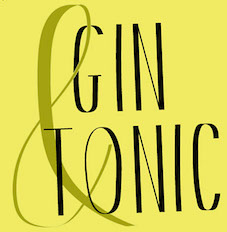 Aka Lilco and Co, and as Lili Lieber-Lövei. Born and raised in Hungary, Lili Lieber lives in Copenhagen and/or Budapest. Designer of (mostly) handcrafted type. Her typefaces include Apolline (2019: a deco sans), Floyd (2019: a display sans), Shifter (2018: reversed letters), Fulio (2018), Oliwe Sans (2018), Lotto Sans Serif (2017: circle-based and monoline), Jenice (2017), Bilbao (2017), Honey Beast (2017), Azille (2017), Easy Tiger (2017, counterless), Maxetti (2017), Argenta (2017), Yeahsayer (2017, a Bohemian sans), Twin Pines (2017), the avant garde sans typeface Avellino (2017), the neat hand-printed typeface Quimper (2017), Copertino (2017), Pompidour (2017), Bolden (2017), the display typeface Gin & Tonic (2017), Shiraz (2017, primitive script), West Coast (2017, sans), and the monoline sans typefaces Quest (2016, +Stencil) and Knots (2016, +Knotted).
Aka Lilco and Co, and as Lili Lieber-Lövei. Born and raised in Hungary, Lili Lieber lives in Copenhagen and/or Budapest. Designer of (mostly) handcrafted type. Her typefaces include Apolline (2019: a deco sans), Floyd (2019: a display sans), Shifter (2018: reversed letters), Fulio (2018), Oliwe Sans (2018), Lotto Sans Serif (2017: circle-based and monoline), Jenice (2017), Bilbao (2017), Honey Beast (2017), Azille (2017), Easy Tiger (2017, counterless), Maxetti (2017), Argenta (2017), Yeahsayer (2017, a Bohemian sans), Twin Pines (2017), the avant garde sans typeface Avellino (2017), the neat hand-printed typeface Quimper (2017), Copertino (2017), Pompidour (2017), Bolden (2017), the display typeface Gin & Tonic (2017), Shiraz (2017, primitive script), West Coast (2017, sans), and the monoline sans typefaces Quest (2016, +Stencil) and Knots (2016, +Knotted).  Designer in Budapest, Hungary, who created the multilined op-art typeface M-OCRROR in 2014, which was originally designed as a captcha typeface.
Designer in Budapest, Hungary, who created the multilined op-art typeface M-OCRROR in 2014, which was originally designed as a captcha typeface. 
 [
[ Handletterer and
Handletterer and  Budapest, Hungary-based designer of the calligraphic script typeface Amelia (2017). This typeface was finished during her studies at KREA Contemporary Art School. [
Budapest, Hungary-based designer of the calligraphic script typeface Amelia (2017). This typeface was finished during her studies at KREA Contemporary Art School. [ Pest, Hungary-based designer of
Pest, Hungary-based designer of 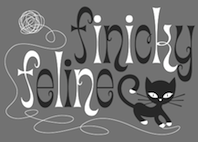 Allen graduated from Delcastle Vocational and Technical High and continued his education at Temple University's Tyler School of Art. Upon returning from studying abroad in 1993, he was invited to partner in founding House Industries. After graduating from Tyler with honors in 1994, Allen became House Industries' third stockholder. Allen Mercer is chief operator, design technician and janitor of Alive Fonts located in Petofibanya Hungary. Alive Fonts is specialized in handrafted typography. As a previous partner at House Industries, he created fonts such as Funhouse, the Street Van collection and the infamous House Gothic. In 1998 Allen gave up his partnership with House Industries to become a full-time Christian missionary with his wife Sharon in Hungary. Allen has been handcrafting fonts for over 20 years.
Allen graduated from Delcastle Vocational and Technical High and continued his education at Temple University's Tyler School of Art. Upon returning from studying abroad in 1993, he was invited to partner in founding House Industries. After graduating from Tyler with honors in 1994, Allen became House Industries' third stockholder. Allen Mercer is chief operator, design technician and janitor of Alive Fonts located in Petofibanya Hungary. Alive Fonts is specialized in handrafted typography. As a previous partner at House Industries, he created fonts such as Funhouse, the Street Van collection and the infamous House Gothic. In 1998 Allen gave up his partnership with House Industries to become a full-time Christian missionary with his wife Sharon in Hungary. Allen has been handcrafting fonts for over 20 years. 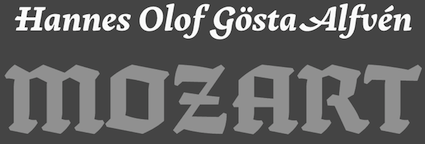 Aliz Borsa is a packaging designer from Hungary. She graduated with an MA from the University of West Hungary, Institute of Applied Arts (AMI), Sopron, in 2010. She also studied painting in Helnaes, Denmark, and typography at MOME, Budapest. Before studying at
Aliz Borsa is a packaging designer from Hungary. She graduated with an MA from the University of West Hungary, Institute of Applied Arts (AMI), Sopron, in 2010. She also studied painting in Helnaes, Denmark, and typography at MOME, Budapest. Before studying at 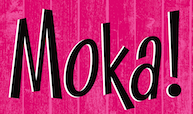 [
[ Design student at the University of Fine Arts in Budapest. In 2012, he created the sans typeface families
Design student at the University of Fine Arts in Budapest. In 2012, he created the sans typeface families  Hungarian graphic designer and photographer in Sydney, who created the stylish piano key bespoke typeface
Hungarian graphic designer and photographer in Sydney, who created the stylish piano key bespoke typeface 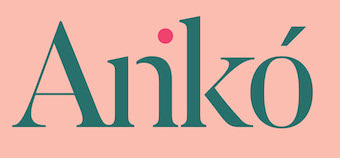 Graduate of the Media & Design Department Eger, Visual Arts Institute, Eger, Hungary. Budapest-based designer of the bilined caps school project typeface
Graduate of the Media & Design Department Eger, Visual Arts Institute, Eger, Hungary. Budapest-based designer of the bilined caps school project typeface  Extraordinary Hungarian design talent based in Budapest, 1986-2015. I can't find enough superlatives to describe his work or find appropriate words to express my sadness when I learned of his death due to a
Extraordinary Hungarian design talent based in Budapest, 1986-2015. I can't find enough superlatives to describe his work or find appropriate words to express my sadness when I learned of his death due to a  Hungarian designer (b. 1982) of the grungy typewriter typeface
Hungarian designer (b. 1982) of the grungy typewriter typeface  [
[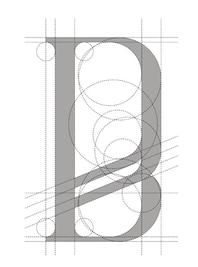 Attila Sütö is a graphic designer in Eger, Hungary. He created the modular display typeface Azidhor (2017), the cosmic typeface Lauronos (2017), and the compass-and-ruler roman caps typeface Imperiem (2017).
Attila Sütö is a graphic designer in Eger, Hungary. He created the modular display typeface Azidhor (2017), the cosmic typeface Lauronos (2017), and the compass-and-ruler roman caps typeface Imperiem (2017).  [
[ Budapest-based creator of
Budapest-based creator of 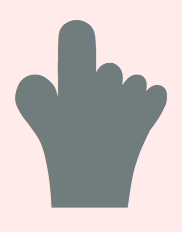 Hungarian creator of the bouncy black comic book typeface Model (2009). He also updated Maurizio Loreti's BrushScriptX and placed the updates
Hungarian creator of the bouncy black comic book typeface Model (2009). He also updated Maurizio Loreti's BrushScriptX and placed the updates 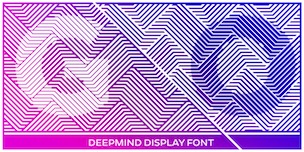 Hungarian designer of the layered brush script typeface
Hungarian designer of the layered brush script typeface  Hungarian foundry with commercial and free fonts, est. 2005 by Attila Zigó. On Deviantart, they claim to be from Rwanda. They specialize in grunge type--some of the fonts are quite gorgeous indeed. Has a fontmaking service.
Hungarian foundry with commercial and free fonts, est. 2005 by Attila Zigó. On Deviantart, they claim to be from Rwanda. They specialize in grunge type--some of the fonts are quite gorgeous indeed. Has a fontmaking service.  Laszlo Mihaly Naske (Burg & Oeden, Budapest, Hungary) designed the Bauhaus-inspired geometric sans typeface Moholy Sans (2015), which was inspired by Paul Renner.
Laszlo Mihaly Naske (Burg & Oeden, Budapest, Hungary) designed the Bauhaus-inspired geometric sans typeface Moholy Sans (2015), which was inspired by Paul Renner. 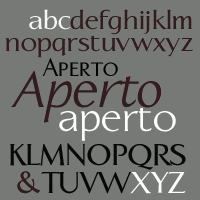 Calligraphics is Paul Veres' outfit in Berkeley, CA.
Calligraphics is Paul Veres' outfit in Berkeley, CA. 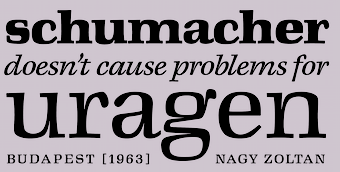 Tibor Szikora is a Budapest, Hungary-based type designer specializing in custom typefaces and lettering. He runs Cinketype. His typefaces:
Tibor Szikora is a Budapest, Hungary-based type designer specializing in custom typefaces and lettering. He runs Cinketype. His typefaces: 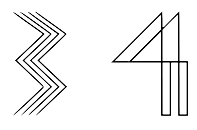 Budapest-based designer of the experimental number font
Budapest-based designer of the experimental number font 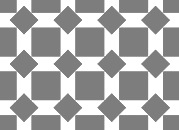 Budapest, Hungary-based designer of Overlap Layered Pattern Font (2015, with
Budapest, Hungary-based designer of Overlap Layered Pattern Font (2015, with 
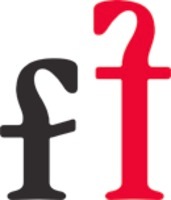 Font HU is a type foundry located in Budapest, Hungary, founded by Robert Kravjanski. In 2014, it started selling its fonts via MyFonts. His typefaces:
Font HU is a type foundry located in Budapest, Hungary, founded by Robert Kravjanski. In 2014, it started selling its fonts via MyFonts. His typefaces: 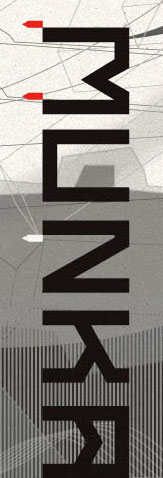 FONTana is a font design studio in Szeged, Hungary, started in 1999.
FONTana is a font design studio in Szeged, Hungary, started in 1999.  Type blog and type jump site in Hungarian, run by Budapest-based studio Gidata Kft. On
Type blog and type jump site in Hungarian, run by Budapest-based studio Gidata Kft. On 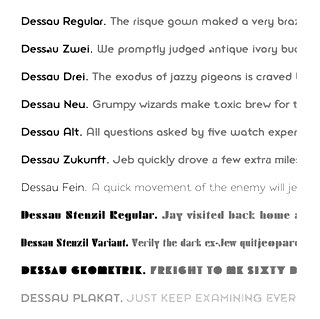 Gábor Kóthay (Fontmunkások) is a Hungarian type designer (b. 1962) who lives in Szeged.
Gábor Kóthay (Fontmunkások) is a Hungarian type designer (b. 1962) who lives in Szeged. 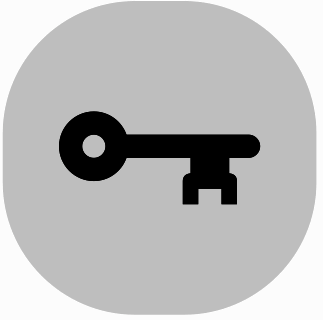 Budapest, Hungary-based studio that created IcoType (2014), a
Budapest, Hungary-based studio that created IcoType (2014), a  [
[ Type designer, b. 1978, Oroshaza, Hungary. Frank Fonts was set up in 2018 by Bela Frank in Budapest, Hungary. His work is experimental and daring. Designer of FR Rupp Mono (2019) and FR Kraken Slab (2018). FR Kraken Slab won an award at
Type designer, b. 1978, Oroshaza, Hungary. Frank Fonts was set up in 2018 by Bela Frank in Budapest, Hungary. His work is experimental and daring. Designer of FR Rupp Mono (2019) and FR Kraken Slab (2018). FR Kraken Slab won an award at 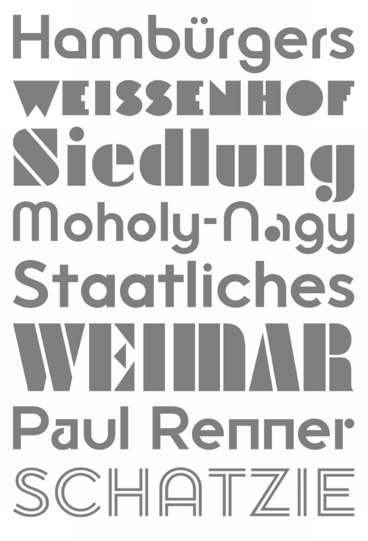 [
[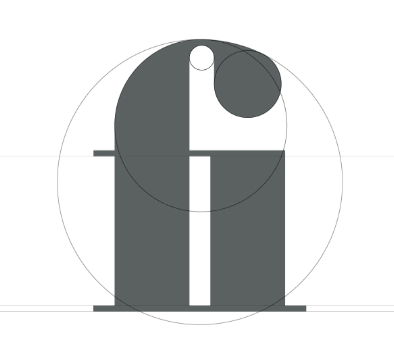 Gabor Vad studied design at the University of West Hungary, and typography at Moholy-Nagy University. Budapest, Hungary-based designer of the partially free octagonal robotic typeface Giant Robot Army (2017) and the gorgeous fat didone typeface Arbitrum (2017).
Gabor Vad studied design at the University of West Hungary, and typography at Moholy-Nagy University. Budapest, Hungary-based designer of the partially free octagonal robotic typeface Giant Robot Army (2017) and the gorgeous fat didone typeface Arbitrum (2017). 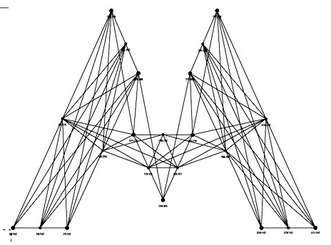 Graphic designer in Budakeszi, Budapest, Hungary, who cofounded Typogravity Studio with Tamas Ilsinszki. Creator of the
Graphic designer in Budakeszi, Budapest, Hungary, who cofounded Typogravity Studio with Tamas Ilsinszki. Creator of the  Gergö Gilicze works as a graphic designer at Halisten Studio in Budapest. In 2013, he created the art deco typeface Hartmann for which he took inspiration from an old movie theater.
Gergö Gilicze works as a graphic designer at Halisten Studio in Budapest. In 2013, he created the art deco typeface Hartmann for which he took inspiration from an old movie theater. 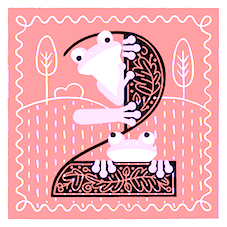 Budapest, Hungary-based designer of Cat Drop Caps (2020) and Aesop's Alphabet (2020). [
Budapest, Hungary-based designer of Cat Drop Caps (2020) and Aesop's Alphabet (2020). [ Adam Katyi, who hails from Sopron, Hungary, has three degrees. He has a BA from the University of West Hungary at Institute of Applied Arts, Sopron in 2010, and an MA from Moholy-Nagy Art and Design University, Budapest in 2012. In 2013, he graduated from the
Adam Katyi, who hails from Sopron, Hungary, has three degrees. He has a BA from the University of West Hungary at Institute of Applied Arts, Sopron in 2010, and an MA from Moholy-Nagy Art and Design University, Budapest in 2012. In 2013, he graduated from the 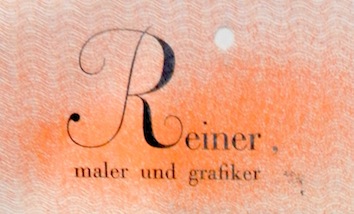 Typographer, architect, designer and
Typographer, architect, designer and  During his studies at Budai Art School, Eger, Hungary-based Istvan Krizsanyik designed the art deco typeface FS Deco Display (2017, FontStruct) and a modular typeface in 2016.
During his studies at Budai Art School, Eger, Hungary-based Istvan Krizsanyik designed the art deco typeface FS Deco Display (2017, FontStruct) and a modular typeface in 2016.  Graphic designer and typographer in Sopron, Hungary. He had a list of type links and a type-related blog. [
Graphic designer and typographer in Sopron, Hungary. He had a list of type links and a type-related blog. [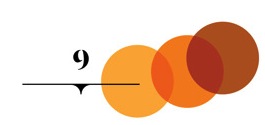 Graphic design student at the Hungarian University of Fine Arts in Budapest. He created the modular typeface
Graphic design student at the Hungarian University of Fine Arts in Budapest. He created the modular typeface  During her studies in Budapest, Kata Moravszki designed the
During her studies in Budapest, Kata Moravszki designed the 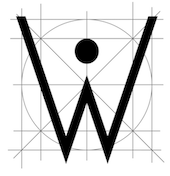 Graphic designer in Budapest, Hungary. Graduate of Loughborough University, class of 2018 (with a bachelor's degree), and Moholy-Nagy University of Art and Design in Budapest in 2021 (with a master's degree). At Loughborough University (UK), Kornel Faludi designed a set of generative typefaces (2016), i.e., typefaces that are very modular and computer-generated to a large extent. His typographic oeuvre is quite experimental. Many of his fonts use just basic geometric structures such as circles, arcs and rectangles.
Graphic designer in Budapest, Hungary. Graduate of Loughborough University, class of 2018 (with a bachelor's degree), and Moholy-Nagy University of Art and Design in Budapest in 2021 (with a master's degree). At Loughborough University (UK), Kornel Faludi designed a set of generative typefaces (2016), i.e., typefaces that are very modular and computer-generated to a large extent. His typographic oeuvre is quite experimental. Many of his fonts use just basic geometric structures such as circles, arcs and rectangles. 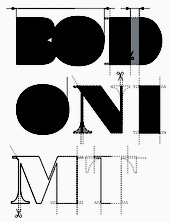 Graphic designer in Budapest. He made
Graphic designer in Budapest. He made 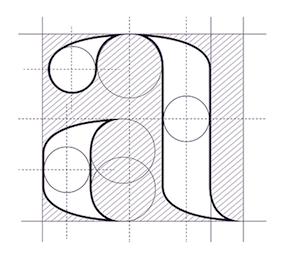 Graphic designer in Budapest, Hungary, who created the experimental compass-and-ruler typeface Abovo in 2015. [
Graphic designer in Budapest, Hungary, who created the experimental compass-and-ruler typeface Abovo in 2015. [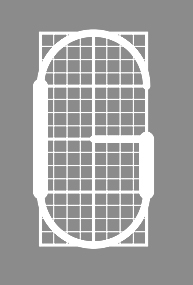 During his studies, Lajos Csutoras (Kaposvar, Hungary) created Flowish (2014) and Switch (2014, alchemic). [
During his studies, Lajos Csutoras (Kaposvar, Hungary) created Flowish (2014) and Switch (2014, alchemic). [ Aka Ludwig Kozma. Hungarian book designer, illustrator, graphic artist, and typographer (b. Kiskorpad, 1884, d. Budapest, 1948) who made Kner, named after Imre Kner, a printer in Budapest.
Aka Ludwig Kozma. Hungarian book designer, illustrator, graphic artist, and typographer (b. Kiskorpad, 1884, d. Budapest, 1948) who made Kner, named after Imre Kner, a printer in Budapest. 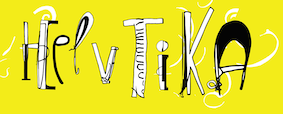 As a student at KREA School of Arts and Design under the supervision of Amondo Szegi, Laszlo Aron Boncz (Budapest, Hungary) designed the wonderfully exaggerated vernacular typeface Helvetika (2017). [
As a student at KREA School of Arts and Design under the supervision of Amondo Szegi, Laszlo Aron Boncz (Budapest, Hungary) designed the wonderfully exaggerated vernacular typeface Helvetika (2017). [ [
[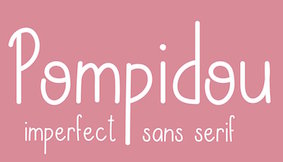 [
[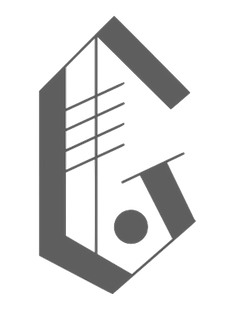 Graphic designer and illustrator in Budapest. During her studies there at the KREA Contemporary art Institute, she took a very original modern view of blackletter in her design of the
Graphic designer and illustrator in Budapest. During her studies there at the KREA Contemporary art Institute, she took a very original modern view of blackletter in her design of the 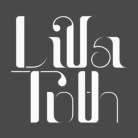 Graphic design student at the Buda Drawing School (2010-2012), who lives in Budapest. She created
Graphic design student at the Buda Drawing School (2010-2012), who lives in Budapest. She created 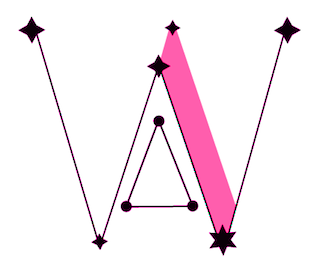 Budapest, Hungary-based designer of the connect-the-dots typeface Stellar (2014). [
Budapest, Hungary-based designer of the connect-the-dots typeface Stellar (2014). [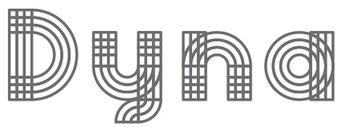 Eger, Hungary-based designer of these fonts:
Eger, Hungary-based designer of these fonts:  Penman, b. 1859, San Antonio, TX, from Hungarian parents. [Some say January 20, 1860] His maternal grandfather, Ladislaus Ujhazi, was Governor of Kameron and the Count of Saros. He traveled a lot and was a versatile and multi-dimensional person. He worked in Sterling, IL, Jersey City, NJ, and Poughkeepsie, NY. He spent most of his life in New York, and died in 1910 in San Francisco. Author of
Penman, b. 1859, San Antonio, TX, from Hungarian parents. [Some say January 20, 1860] His maternal grandfather, Ladislaus Ujhazi, was Governor of Kameron and the Count of Saros. He traveled a lot and was a versatile and multi-dimensional person. He worked in Sterling, IL, Jersey City, NJ, and Poughkeepsie, NY. He spent most of his life in New York, and died in 1910 in San Francisco. Author of  Bálint Koczman (aka
Bálint Koczman (aka 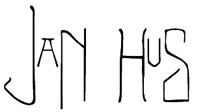
 Designer in Budapest, Hungary (and before that, in Oradea, Romania), who made
Designer in Budapest, Hungary (and before that, in Oradea, Romania), who made 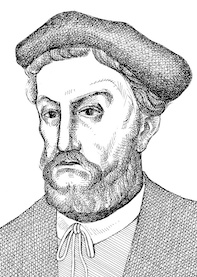 Miklós Tótfalusi Kis (Nicholas Kis) was born in Misztótfalu, Hungary, in 1650. He left for Amsterdam in 1680, where he worked on la Biblia Hungara (1685), Book of Hymns of San David (1686), and the New Testament (1687). He also published many books for children. Taught there by Dirk Voskens, he made what is now known as Janson Text around 1690. Around 1690, he made an elegant face, Nikis. He died in 1702. The story of Kis's types, now also known as Dutch types, is eloquently told by
Miklós Tótfalusi Kis (Nicholas Kis) was born in Misztótfalu, Hungary, in 1650. He left for Amsterdam in 1680, where he worked on la Biblia Hungara (1685), Book of Hymns of San David (1686), and the New Testament (1687). He also published many books for children. Taught there by Dirk Voskens, he made what is now known as Janson Text around 1690. Around 1690, he made an elegant face, Nikis. He died in 1702. The story of Kis's types, now also known as Dutch types, is eloquently told by 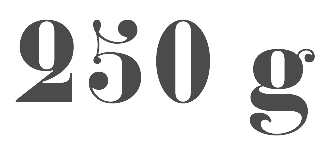 Graduate of Moholy-Nagy University of Arts and Design, Budapest, Hungary. His early work covers Errer (2014), a display typeface done for a French / Hungarian magazine. France-based designer of the didone typeface Constantin (2017), which is based on the gros canon size of a typeface sold by the Constantin widows, who operated a type foundry in Nancy, France, in the middle of the 19th century, La fonderie de veuve Constantin ainé et Constantin jeune.
Graduate of Moholy-Nagy University of Arts and Design, Budapest, Hungary. His early work covers Errer (2014), a display typeface done for a French / Hungarian magazine. France-based designer of the didone typeface Constantin (2017), which is based on the gros canon size of a typeface sold by the Constantin widows, who operated a type foundry in Nancy, France, in the middle of the 19th century, La fonderie de veuve Constantin ainé et Constantin jeune. 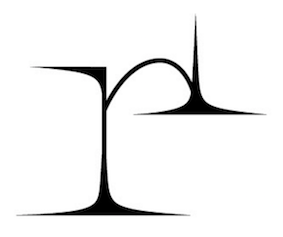 Type and graphic designer in Eger, Hungary. Her typefaces include Faglia (2021: a stunning (free) thorny display serif), Contras (2020: a modernist and futurist display typeface created at Karoly University's Visual Arts Institute in Eger under the supervision of Monika Rudics), and Star Spark (2020). [
Type and graphic designer in Eger, Hungary. Her typefaces include Faglia (2021: a stunning (free) thorny display serif), Contras (2020: a modernist and futurist display typeface created at Karoly University's Visual Arts Institute in Eger under the supervision of Monika Rudics), and Star Spark (2020). [ Free fonts by Hungarian type and graphic designer
Free fonts by Hungarian type and graphic designer 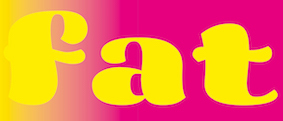 Born in Hungary, Nora Bekes obtained a BA and MA in psychology from Szeged University in 2007 and 2010 respectively. In 2014, she started graphic design studies at the KABK in Den Haag, The Netherlands, and graduated in 2018. She works as an independent designer based in Rotterdam. Her practice focuses on the intersection of type design, typography and visual story telling. Her main interest lies at the research of archives and their contemporary interpretations.
Born in Hungary, Nora Bekes obtained a BA and MA in psychology from Szeged University in 2007 and 2010 respectively. In 2014, she started graphic design studies at the KABK in Den Haag, The Netherlands, and graduated in 2018. She works as an independent designer based in Rotterdam. Her practice focuses on the intersection of type design, typography and visual story telling. Her main interest lies at the research of archives and their contemporary interpretations. 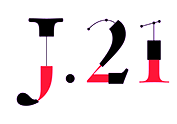 Graduate of the Hungarian University of Fine Arts, class of 2014, who works as graphic designer in Budapest. Together with
Graduate of the Hungarian University of Fine Arts, class of 2014, who works as graphic designer in Budapest. Together with 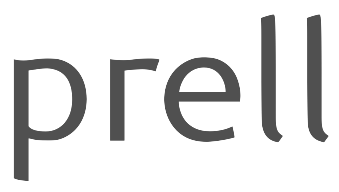 Die Gestalten writes about Hungarian artist Norbert Prell who is based in Budapest: Growing up in an artistic family, Norbert Prell was confronted by art and creativity at an early age. This laid the foundation for his aesthetic appreciation and paves the way for his design career. Initially trained as a graphic designer at the art school in Pécs and the Hungarian University of Fine Arts in Budapest, he then developed great interests in typography and font design. In 2010, he became an Erasmus student in the Department of Media Technology/Design Department at the HAW Hamburg (Hamburg University of Applied Science) to learn typography and calligraphy.
Die Gestalten writes about Hungarian artist Norbert Prell who is based in Budapest: Growing up in an artistic family, Norbert Prell was confronted by art and creativity at an early age. This laid the foundation for his aesthetic appreciation and paves the way for his design career. Initially trained as a graphic designer at the art school in Pécs and the Hungarian University of Fine Arts in Budapest, he then developed great interests in typography and font design. In 2010, he became an Erasmus student in the Department of Media Technology/Design Department at the HAW Hamburg (Hamburg University of Applied Science) to learn typography and calligraphy.  Hungarian outfit established in 2008 by graphic designers Mark Zador and Attila Horvath. Typefaces created by them are mostly techno or minimalist:
Hungarian outfit established in 2008 by graphic designers Mark Zador and Attila Horvath. Typefaces created by them are mostly techno or minimalist: 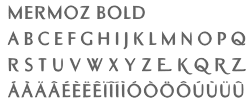 Born in Budapest in 1957, but Parisian since 1957. Designer and type artist who made many custom and magazine fonts.
Born in Budapest in 1957, but Parisian since 1957. Designer and type artist who made many custom and magazine fonts. 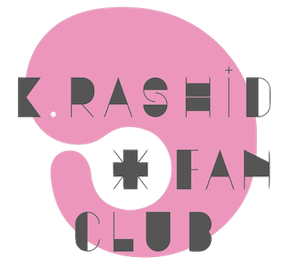 Peter Simon is a freelance graphic designer living and working in Budapest, Hungary. He graduated from the Hungarian University of Fine Arts. In 2013, he designed a beautiful geometric display typeface called
Peter Simon is a freelance graphic designer living and working in Budapest, Hungary. He graduated from the Hungarian University of Fine Arts. In 2013, he designed a beautiful geometric display typeface called 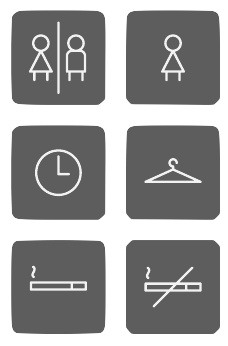 Budapest-based graphic and packaging designer, b. 1980. Creator of a soft-edged
Budapest-based graphic and packaging designer, b. 1980. Creator of a soft-edged 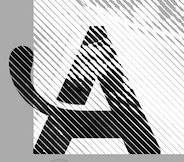 Budapest, Hungary-based designer of the experimental font Tug (2012) and the condensed beveled typeface R9 (2016). [
Budapest, Hungary-based designer of the experimental font Tug (2012) and the condensed beveled typeface R9 (2016). [ Budapest, Hungary-based designer of Balu Grotesk (2014).
Budapest, Hungary-based designer of Balu Grotesk (2014).  [
[ Kazincbarcika, Hungary-based type designer Roland Hüse (b. 1980) sells his fonts through My Handwritings (Kazincbarcika, Hungary), which was renamed Runes&Fonts. His first font is
Kazincbarcika, Hungary-based type designer Roland Hüse (b. 1980) sells his fonts through My Handwritings (Kazincbarcika, Hungary), which was renamed Runes&Fonts. His first font is 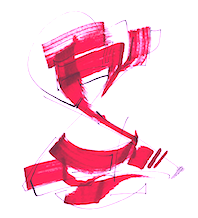 Eger, Hungary-based student-designer of the experimental painter's typeface Marker (2014) and the
Eger, Hungary-based student-designer of the experimental painter's typeface Marker (2014) and the 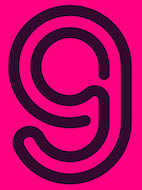 During his studies at the
During his studies at the 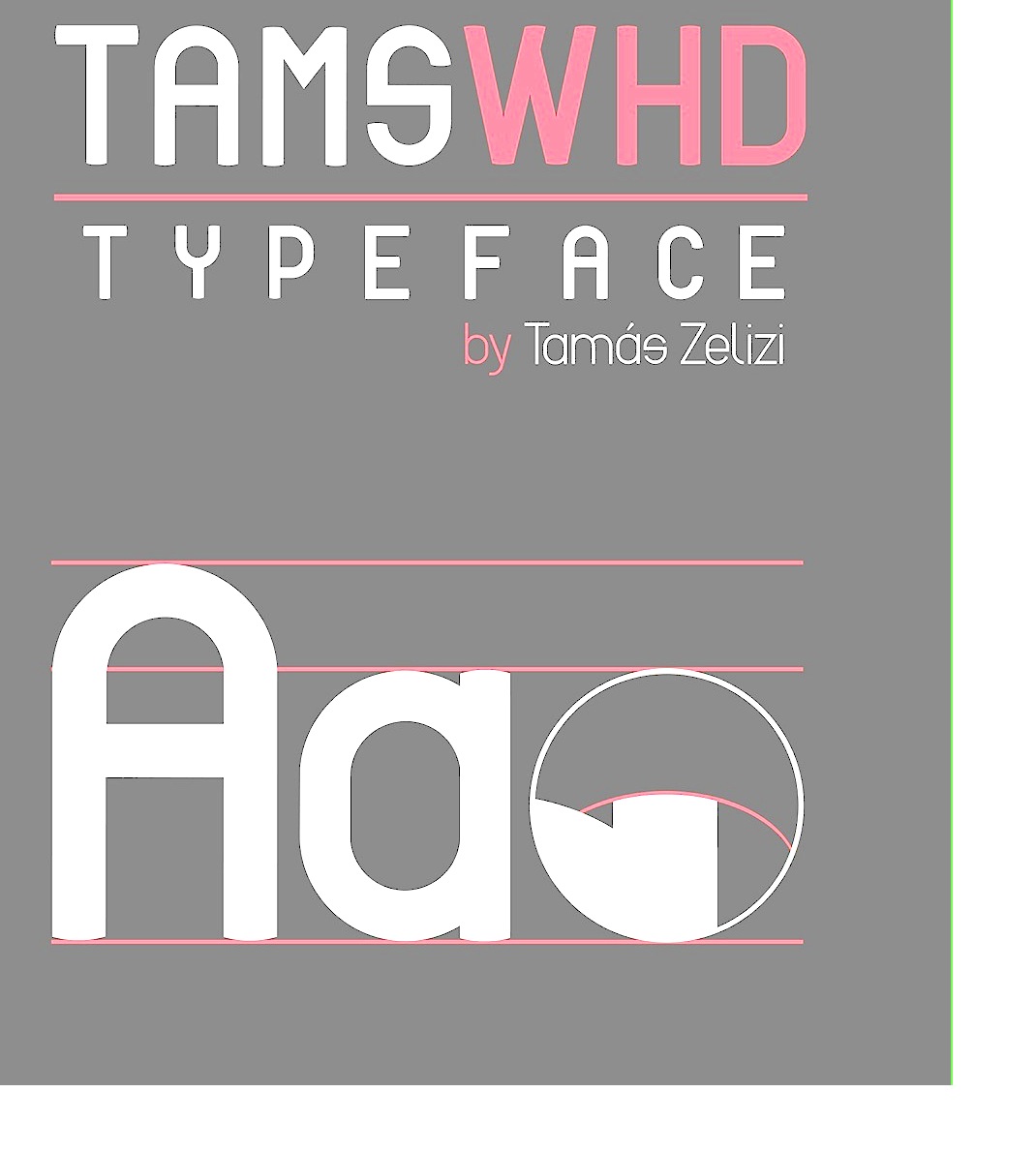 Graduate of the Jaschik Almos School of Arts in Budapest. Designer of the hipster sans typeface family tams WHD (2014). [
Graduate of the Jaschik Almos School of Arts in Budapest. Designer of the hipster sans typeface family tams WHD (2014). [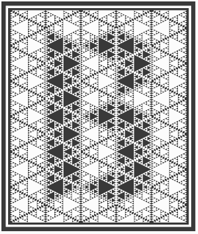 Budapest-based creator (aka Frodo 7) in 2009 at FontStruct of FontMoot 01 (pixel face), Brego,
Budapest-based creator (aka Frodo 7) in 2009 at FontStruct of FontMoot 01 (pixel face), Brego,  Hungarian designer of commercial fonts (from 2012 onwards, as Typesgal), located in Puspokhatvan, Hungary:
Hungarian designer of commercial fonts (from 2012 onwards, as Typesgal), located in Puspokhatvan, Hungary: 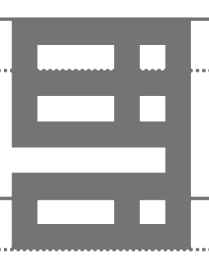 During his graphic design studies in Budapest, Hungary, Viktor Földi created a Chinese simulation typeface based on Rubik's cube, called Qubik (2014). This experimental innovative typeface family is worth a closer look.
During his graphic design studies in Budapest, Hungary, Viktor Földi created a Chinese simulation typeface based on Rubik's cube, called Qubik (2014). This experimental innovative typeface family is worth a closer look.  Fontstructor who made the modular octagonal counterless typeface
Fontstructor who made the modular octagonal counterless typeface 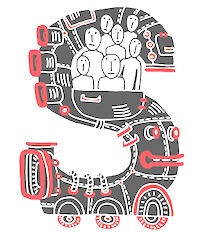 Budapest-based designer of a set of decorative caps called Public Transport 2014. This was a school project.
Budapest-based designer of a set of decorative caps called Public Transport 2014. This was a school project.  Hungarian type designer (1920-1998) (some pubs mention a birth date of 1921), who is responsible for most types in Hungary in the 20th century. He studied graphic arts at the Technical University of Budapest, and became chief engineer and art director at Elsö Magyar Betüöntöde. Author of Techniques of Type Design. He also engraved many postage stamps.
Hungarian type designer (1920-1998) (some pubs mention a birth date of 1921), who is responsible for most types in Hungary in the 20th century. He studied graphic arts at the Technical University of Budapest, and became chief engineer and art director at Elsö Magyar Betüöntöde. Author of Techniques of Type Design. He also engraved many postage stamps. 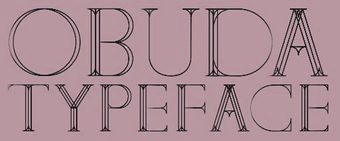 During her graphic design studies in Budapest, Zsuzsanna Erdélyi designed the exquisite
During her graphic design studies in Budapest, Zsuzsanna Erdélyi designed the exquisite